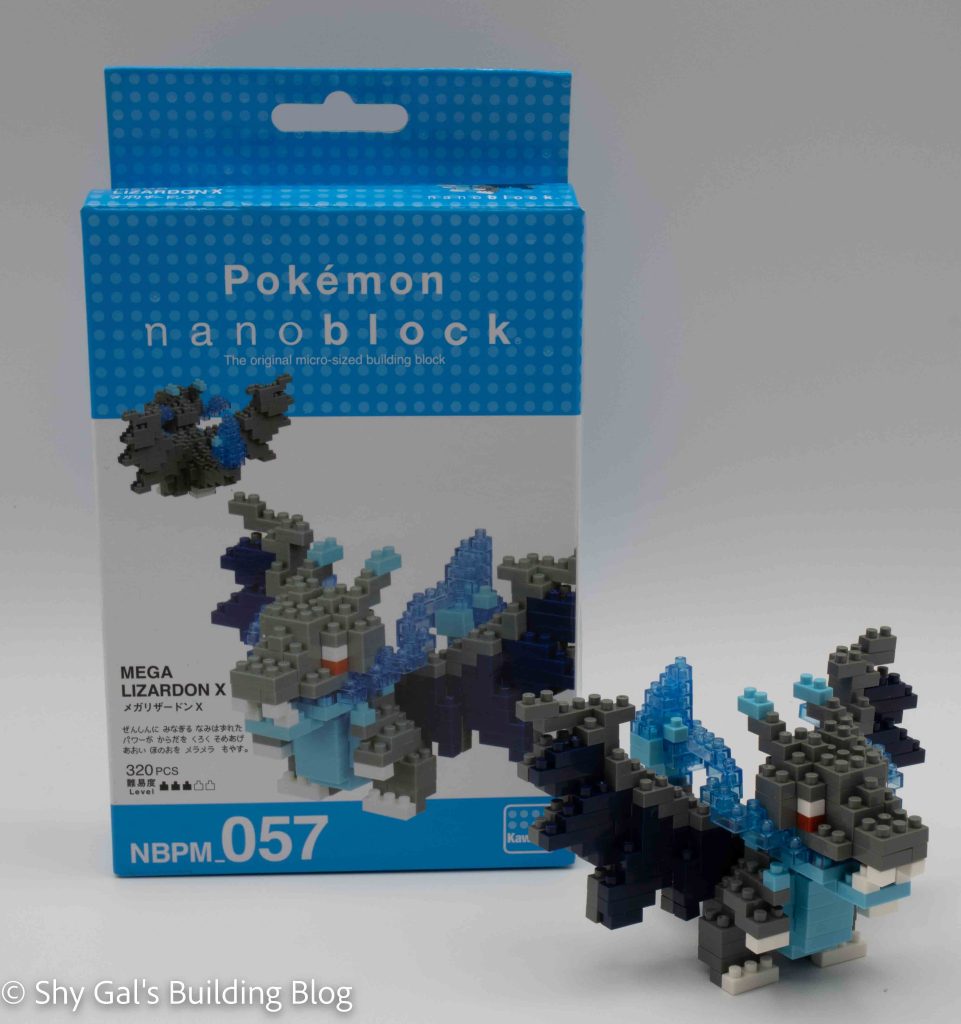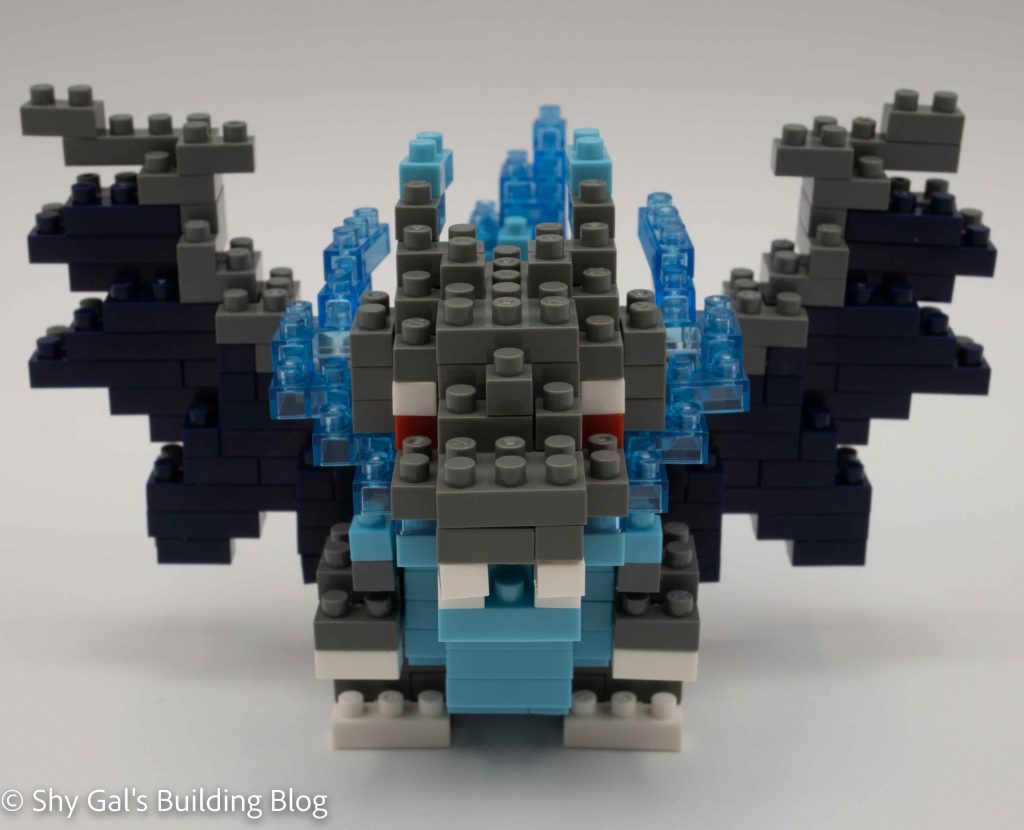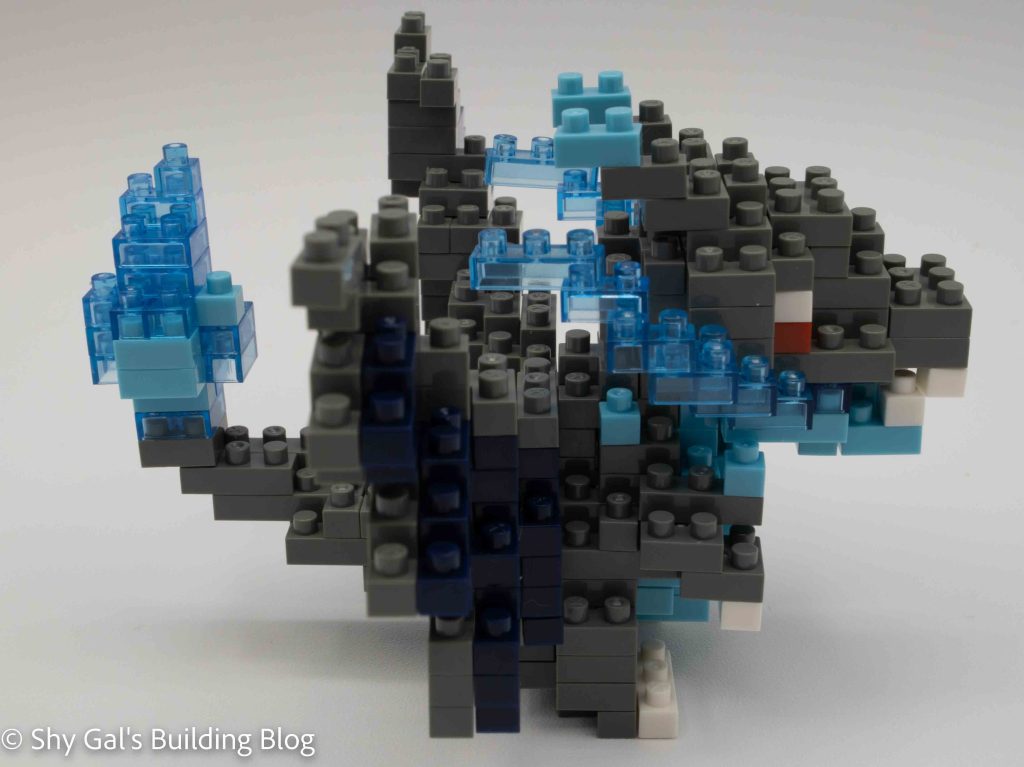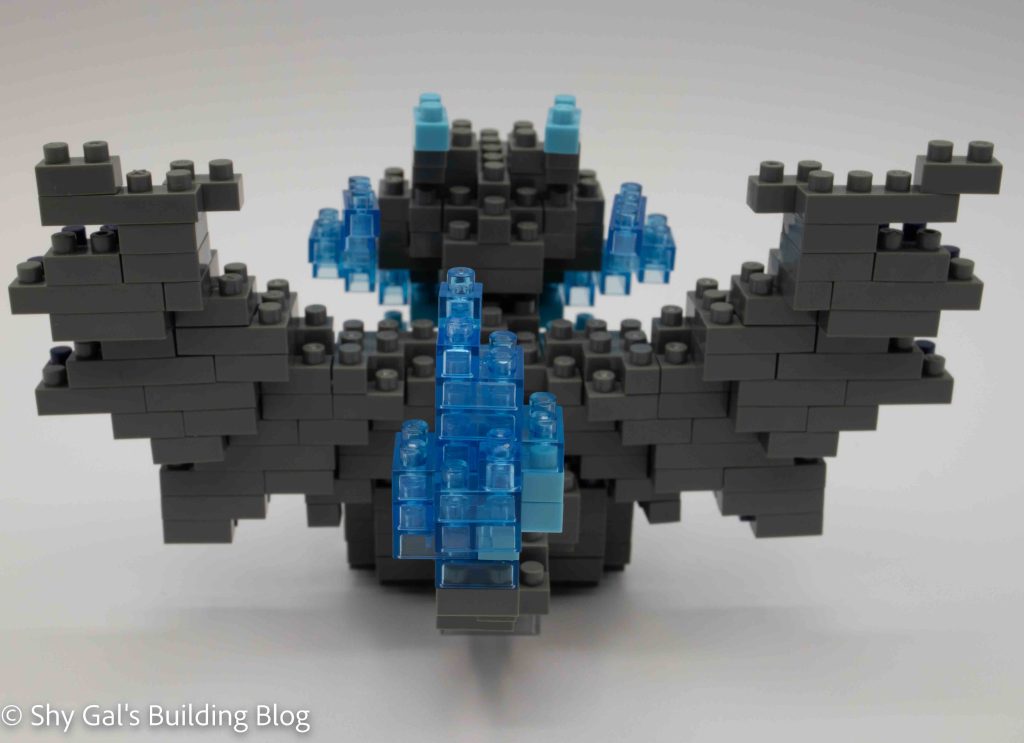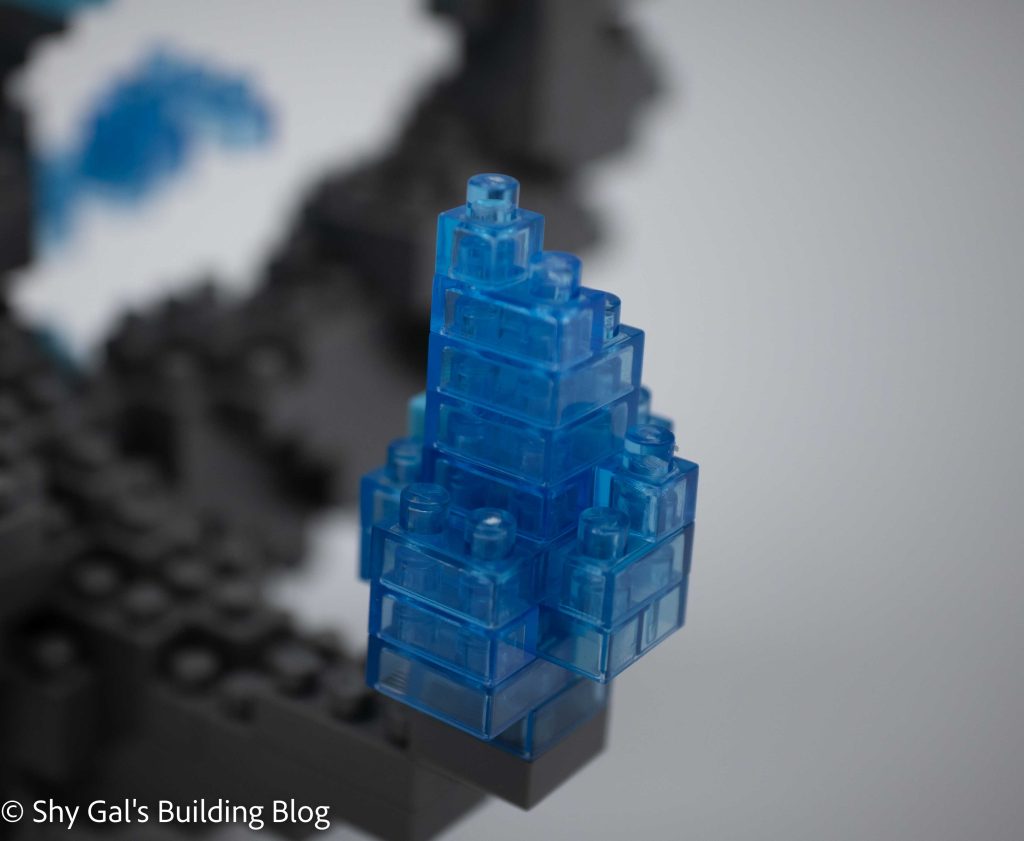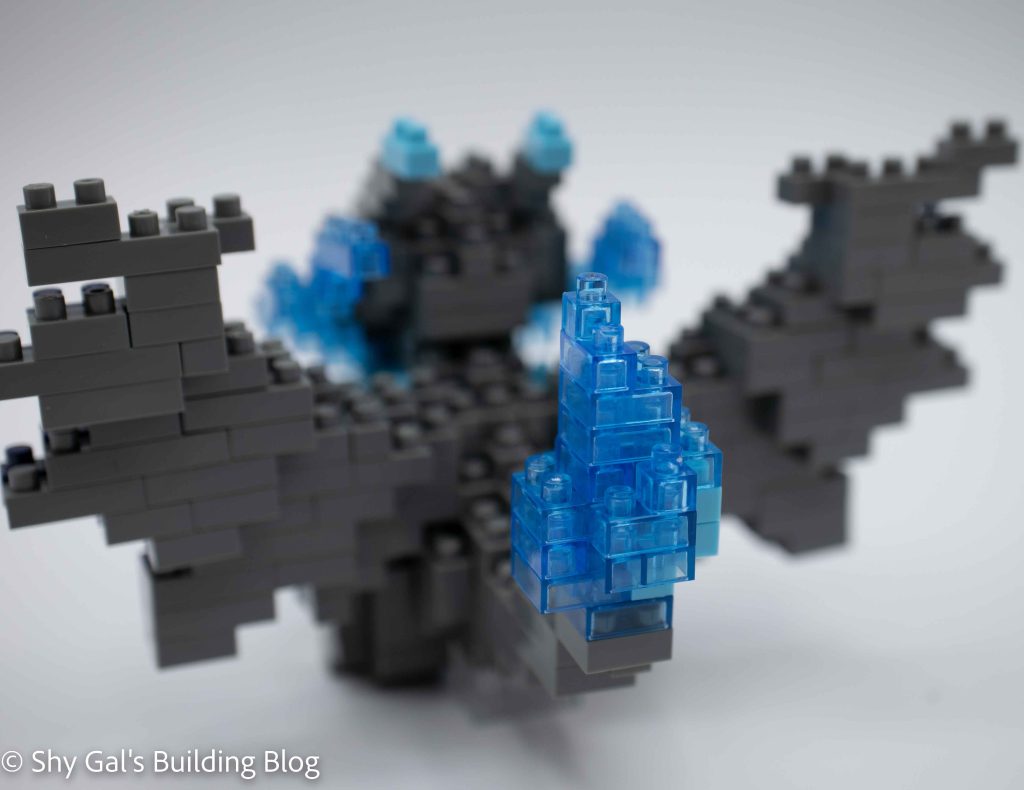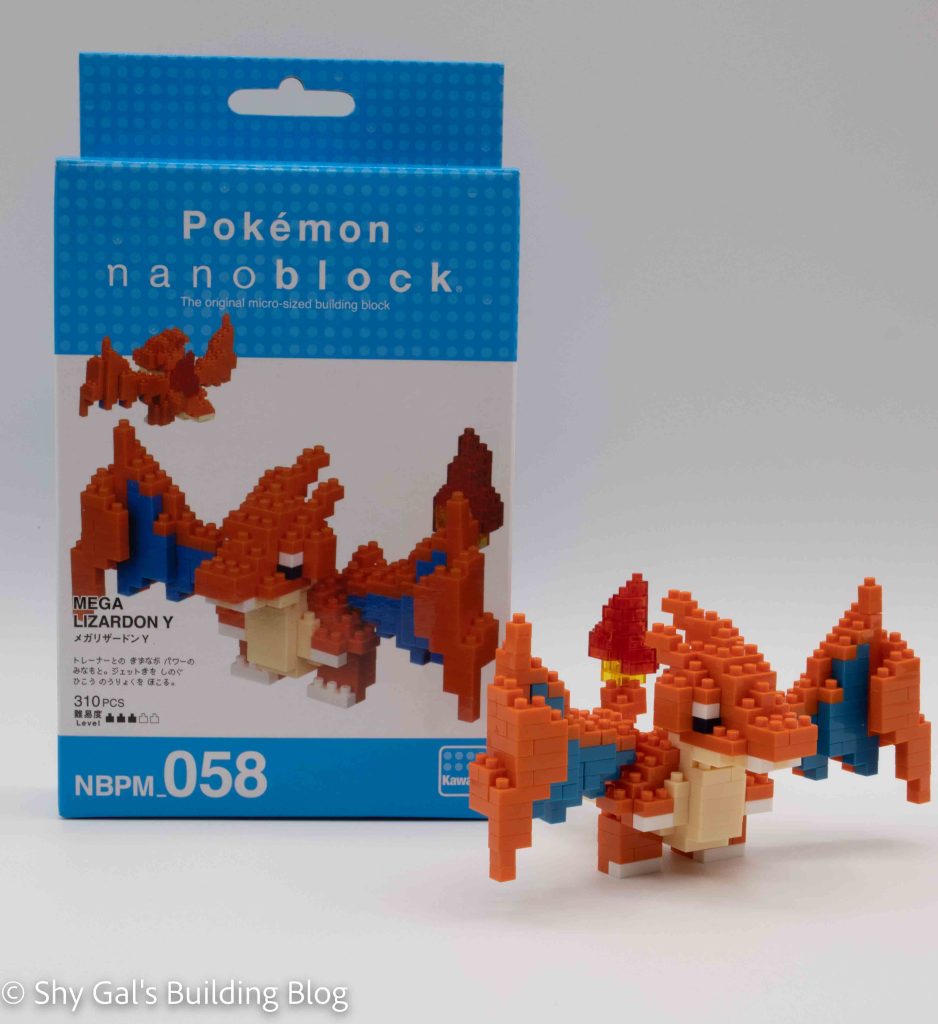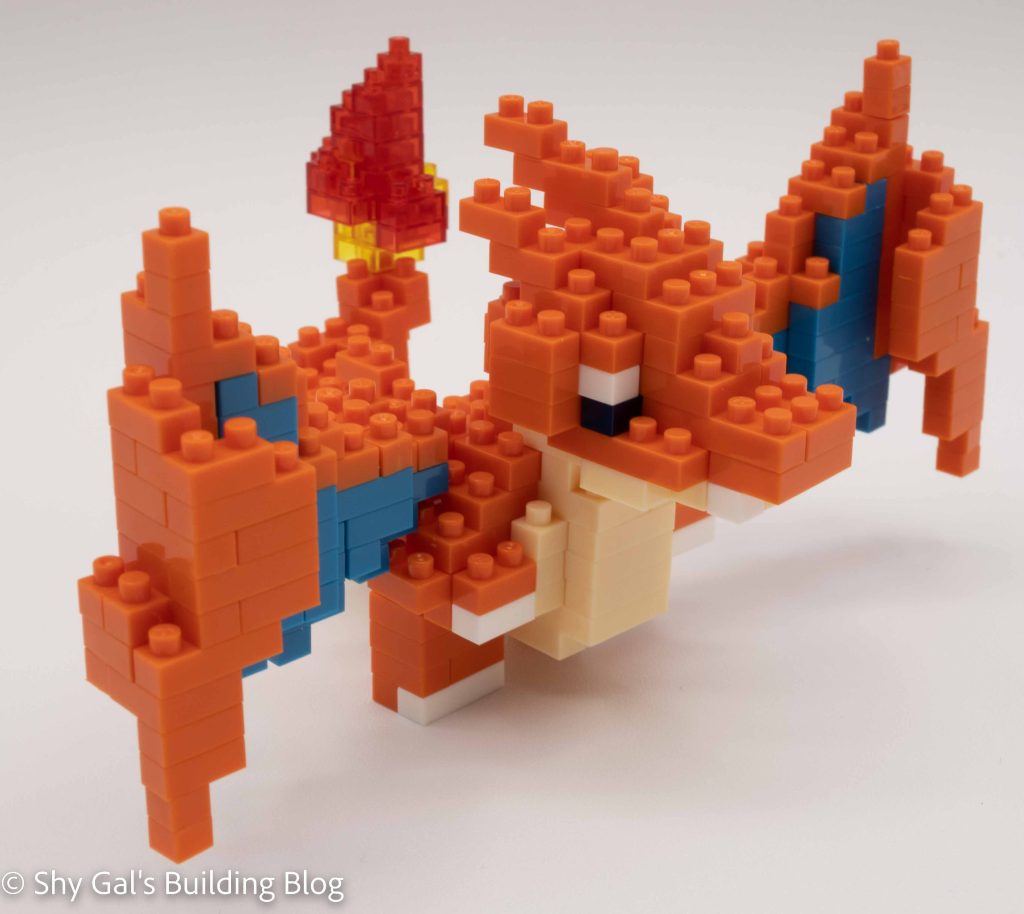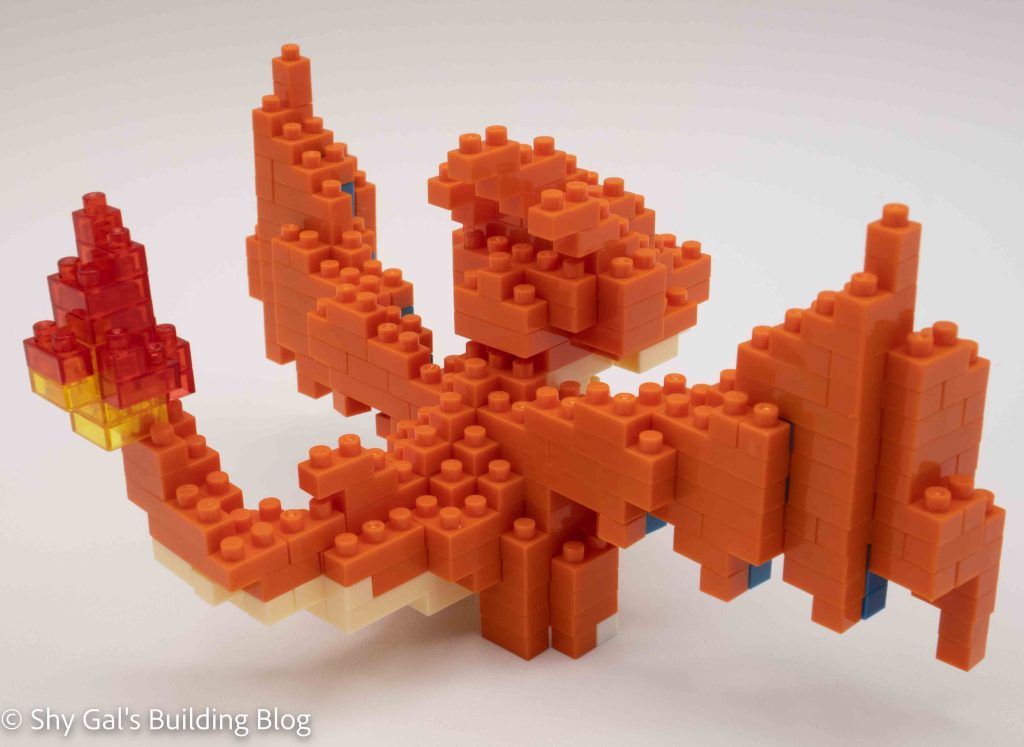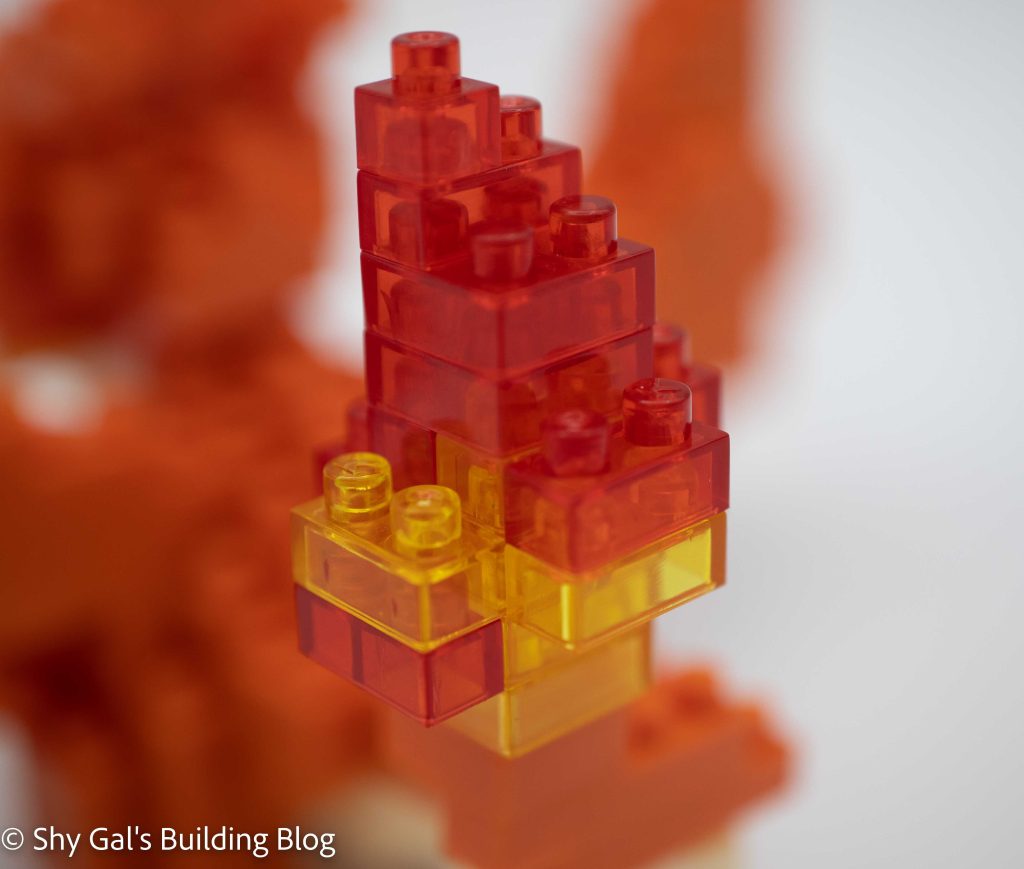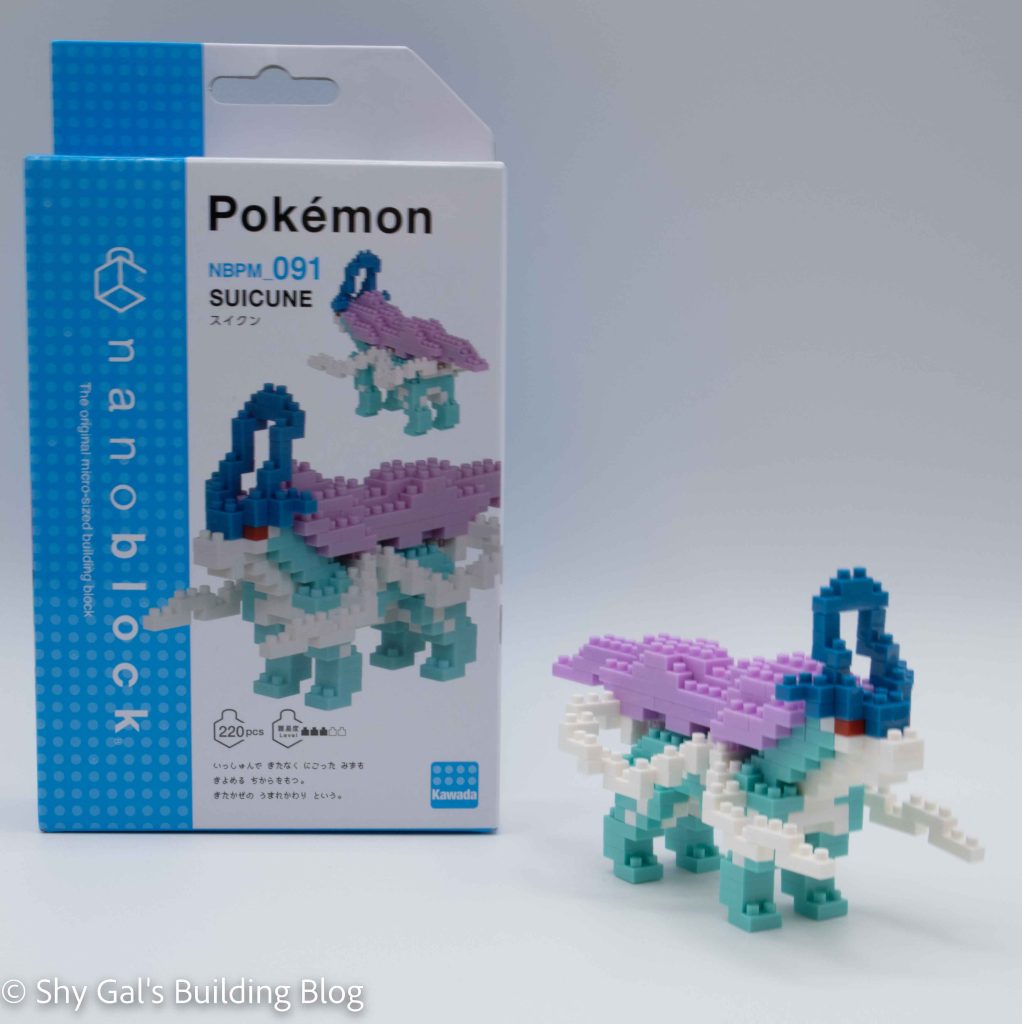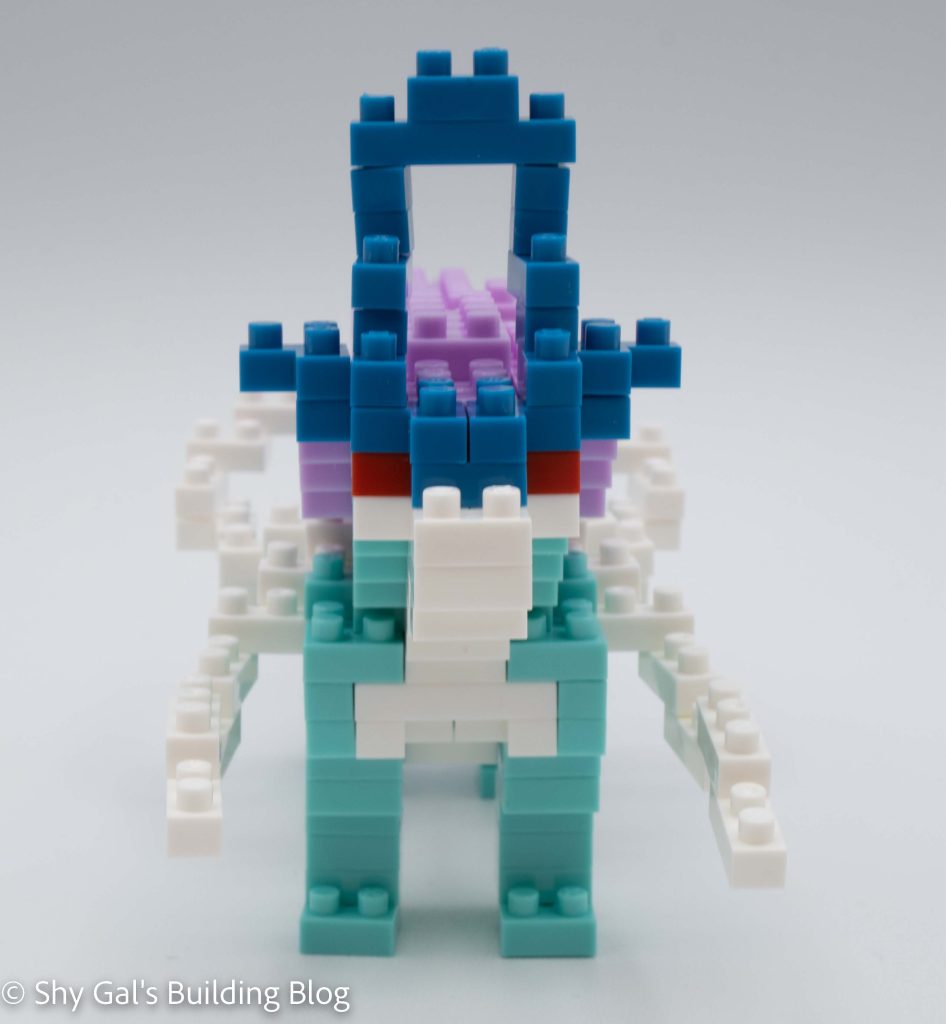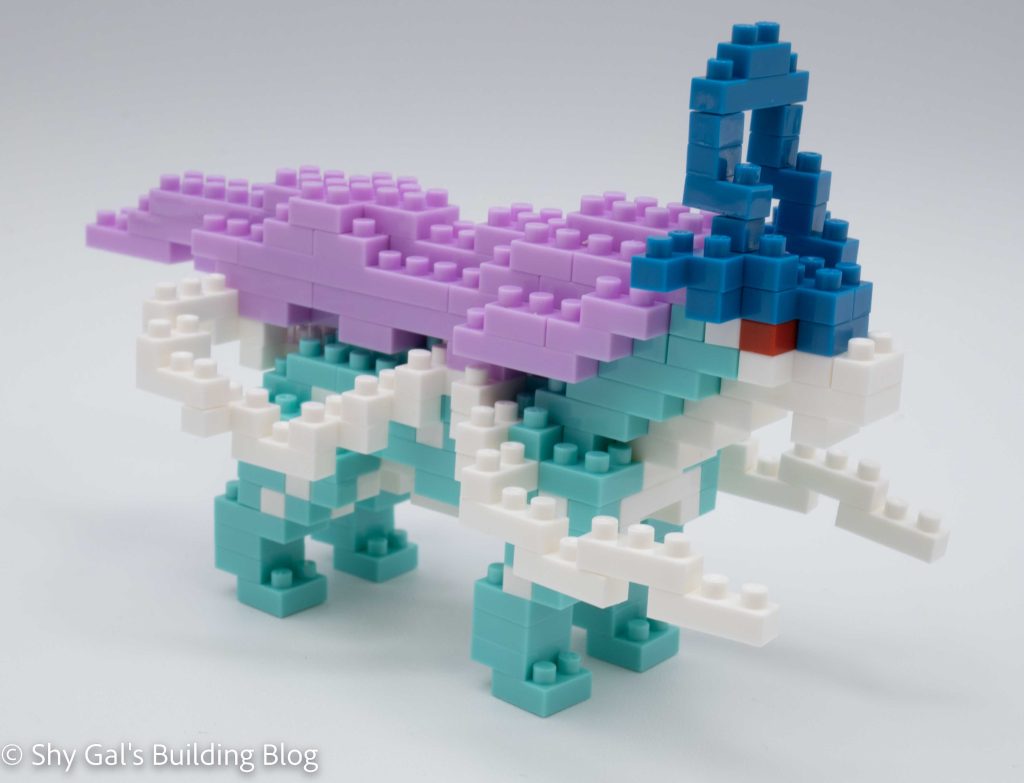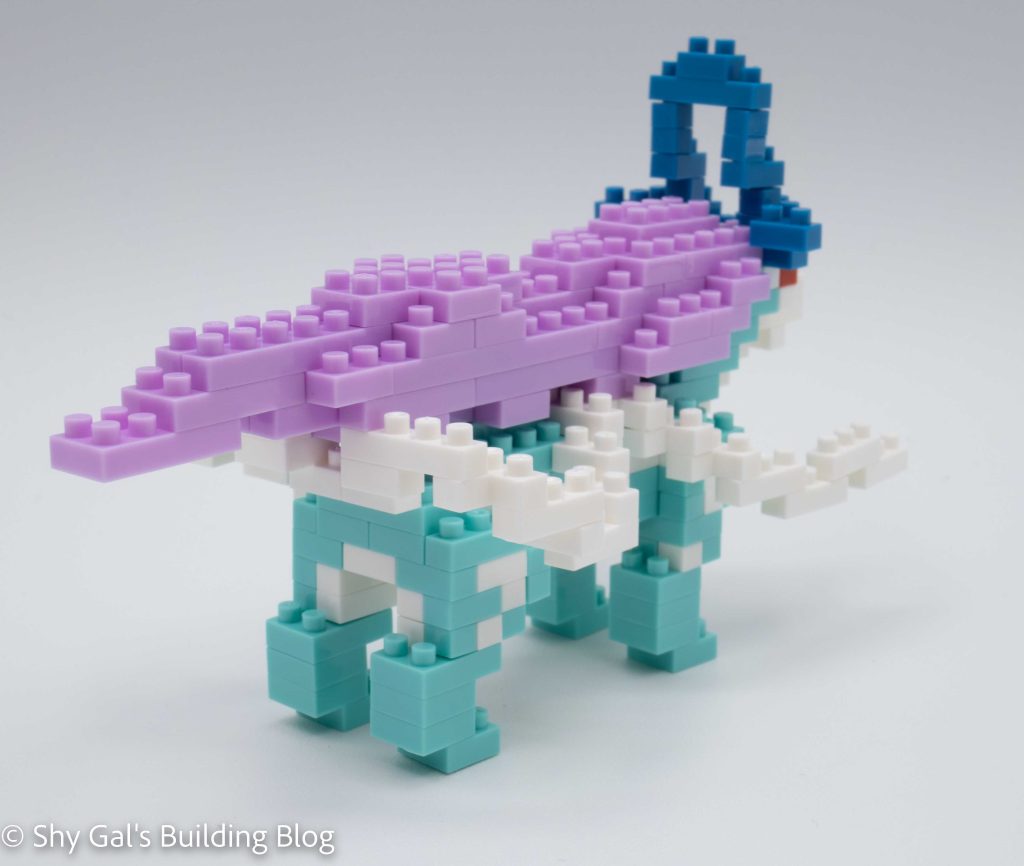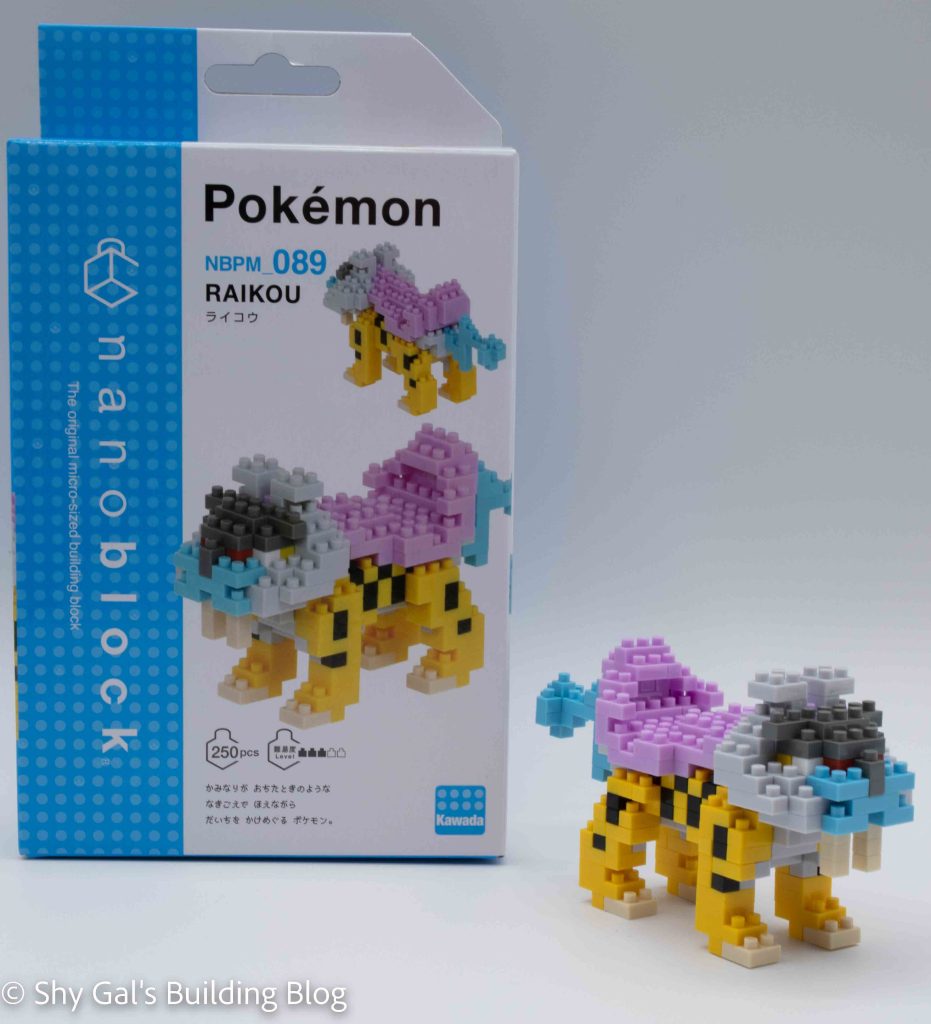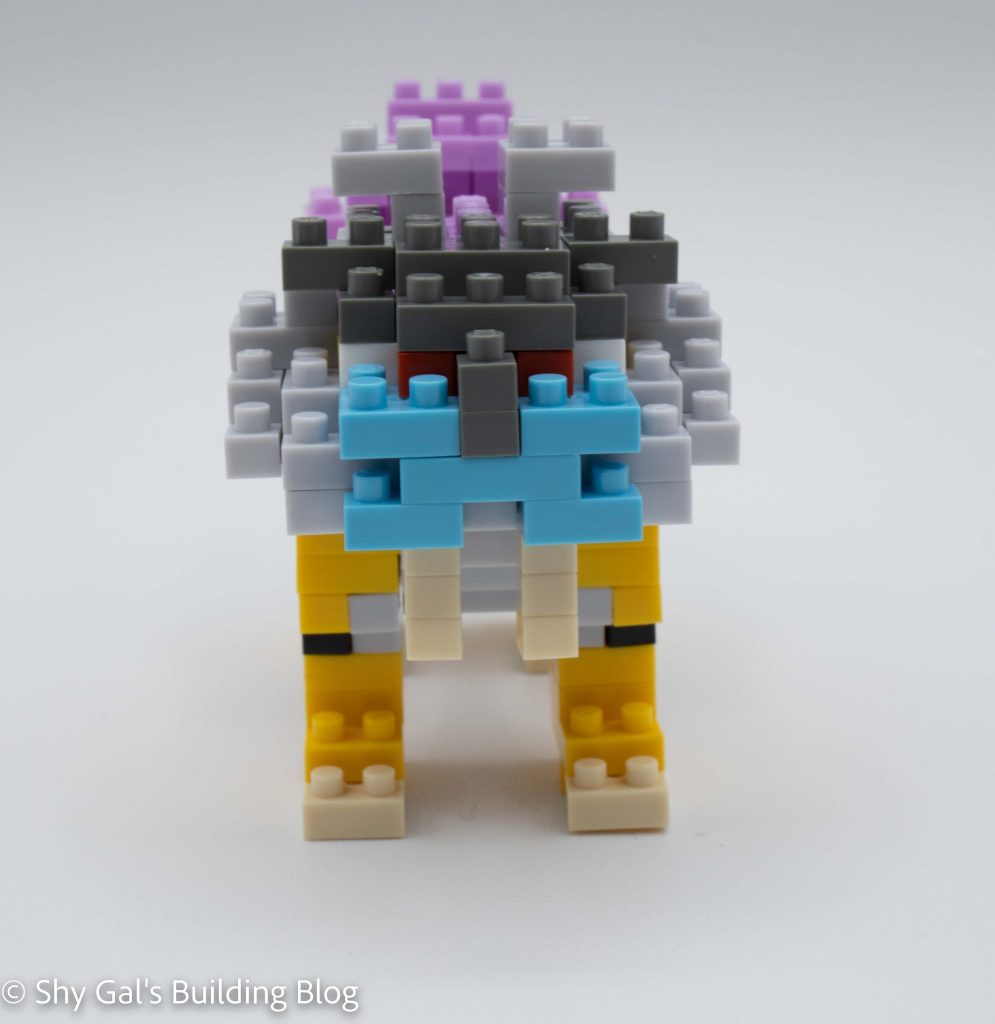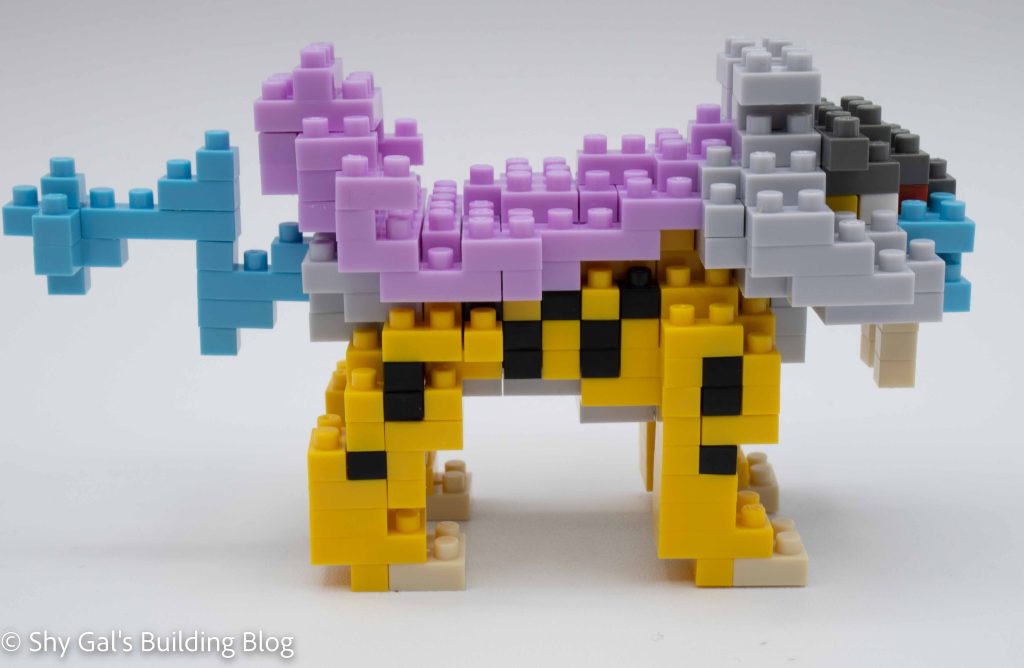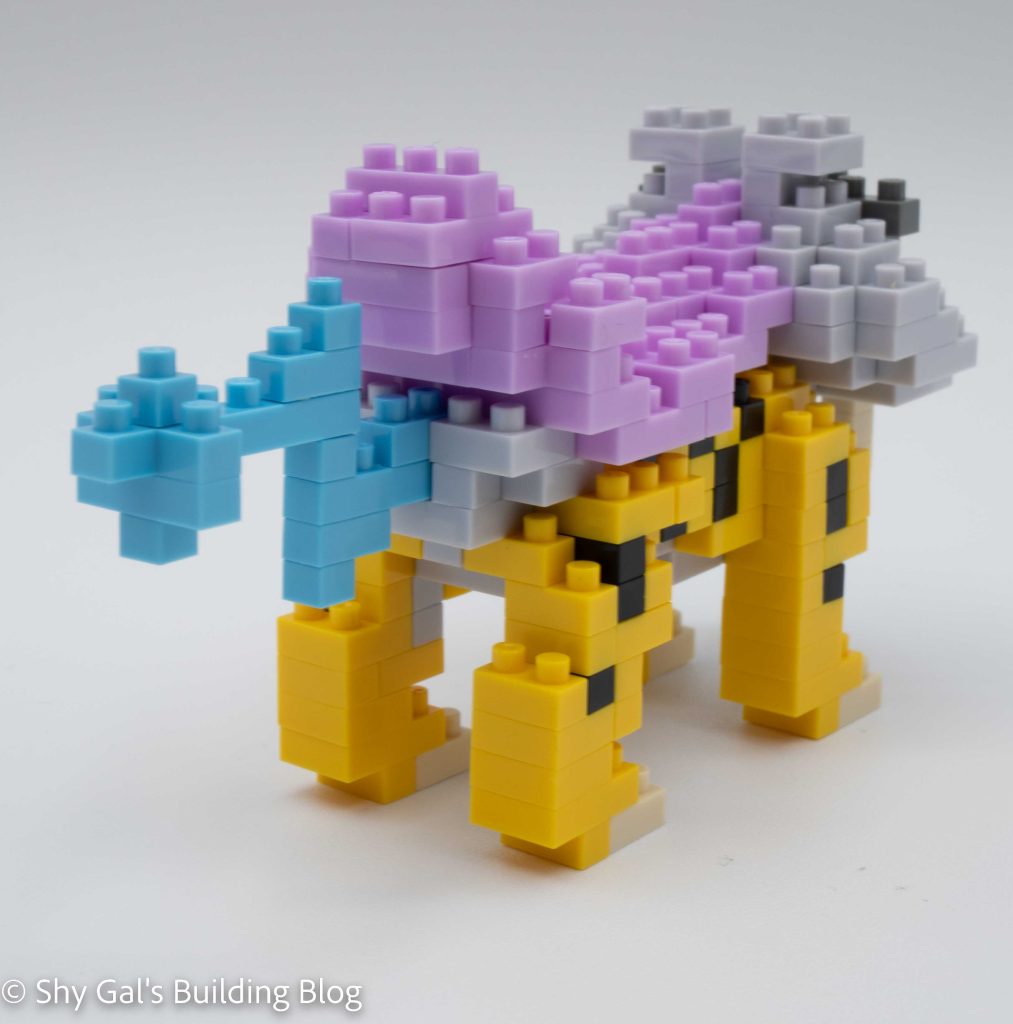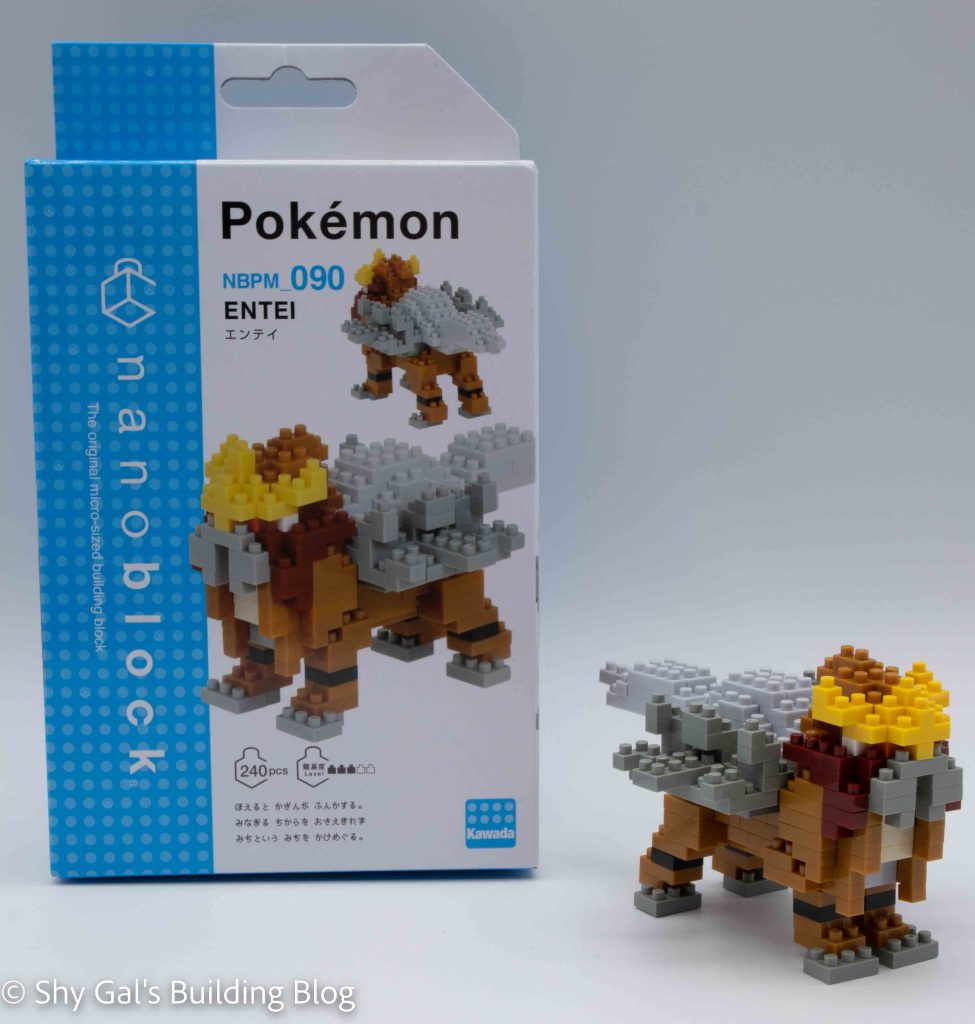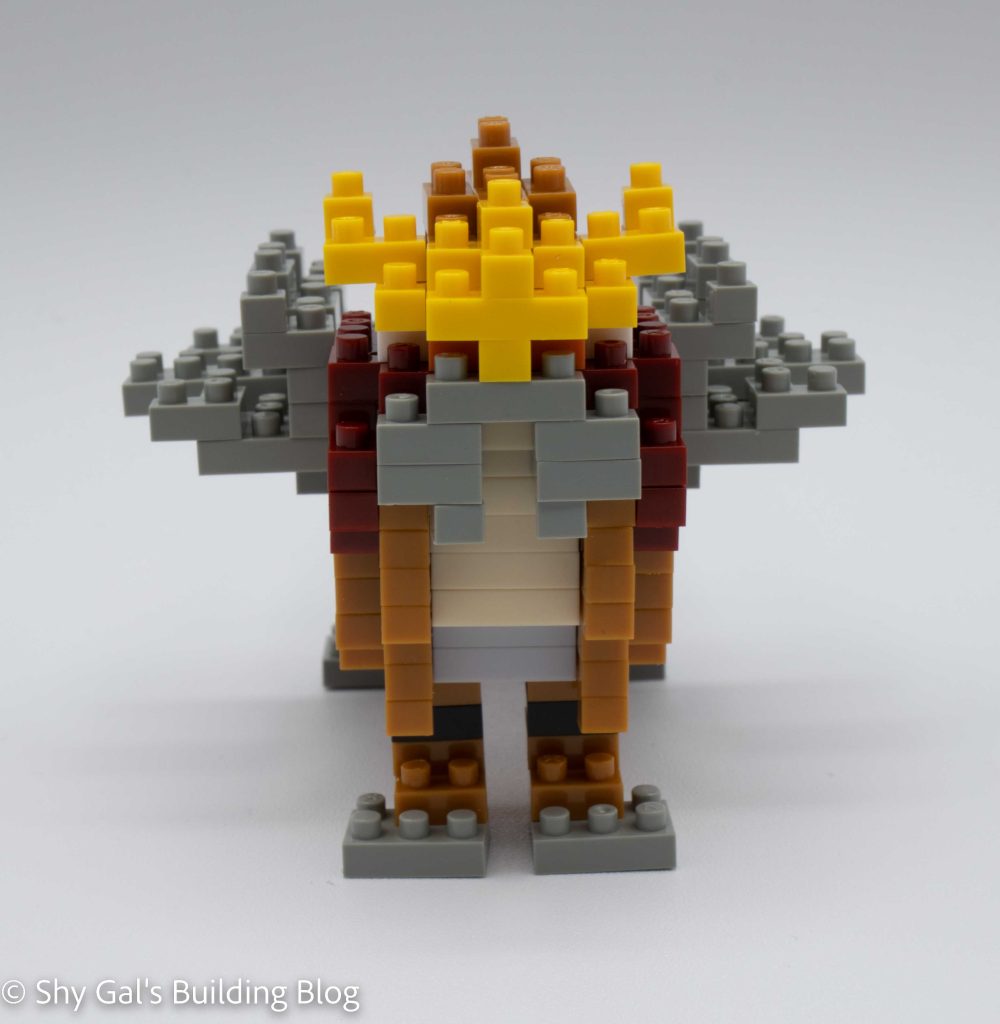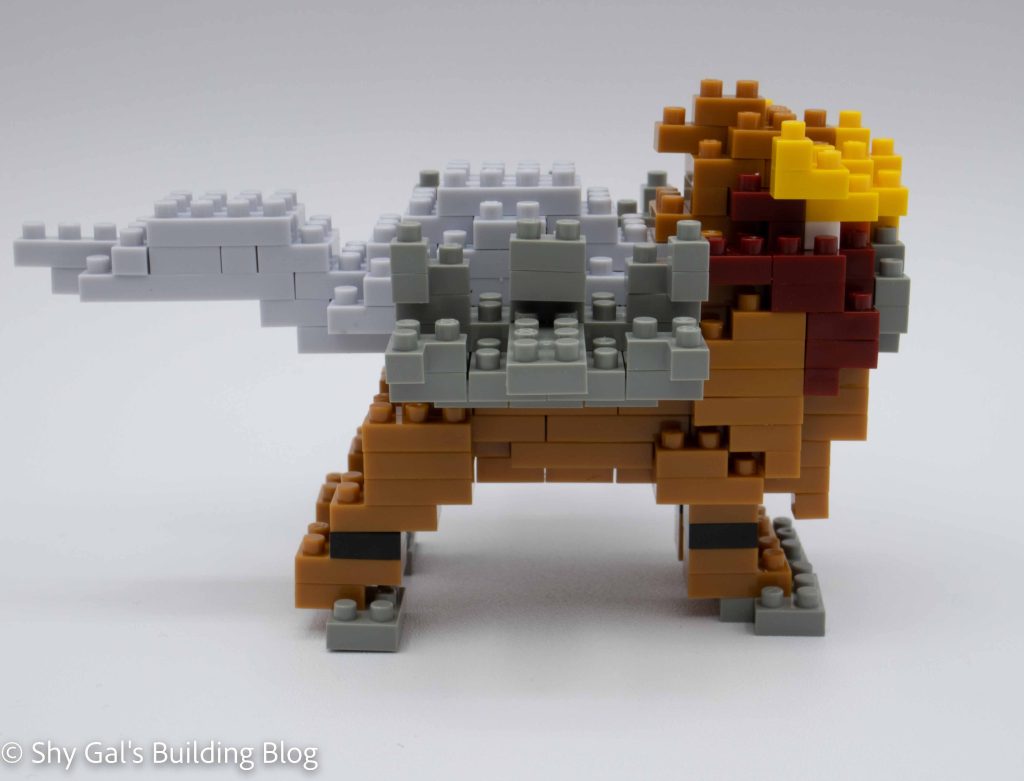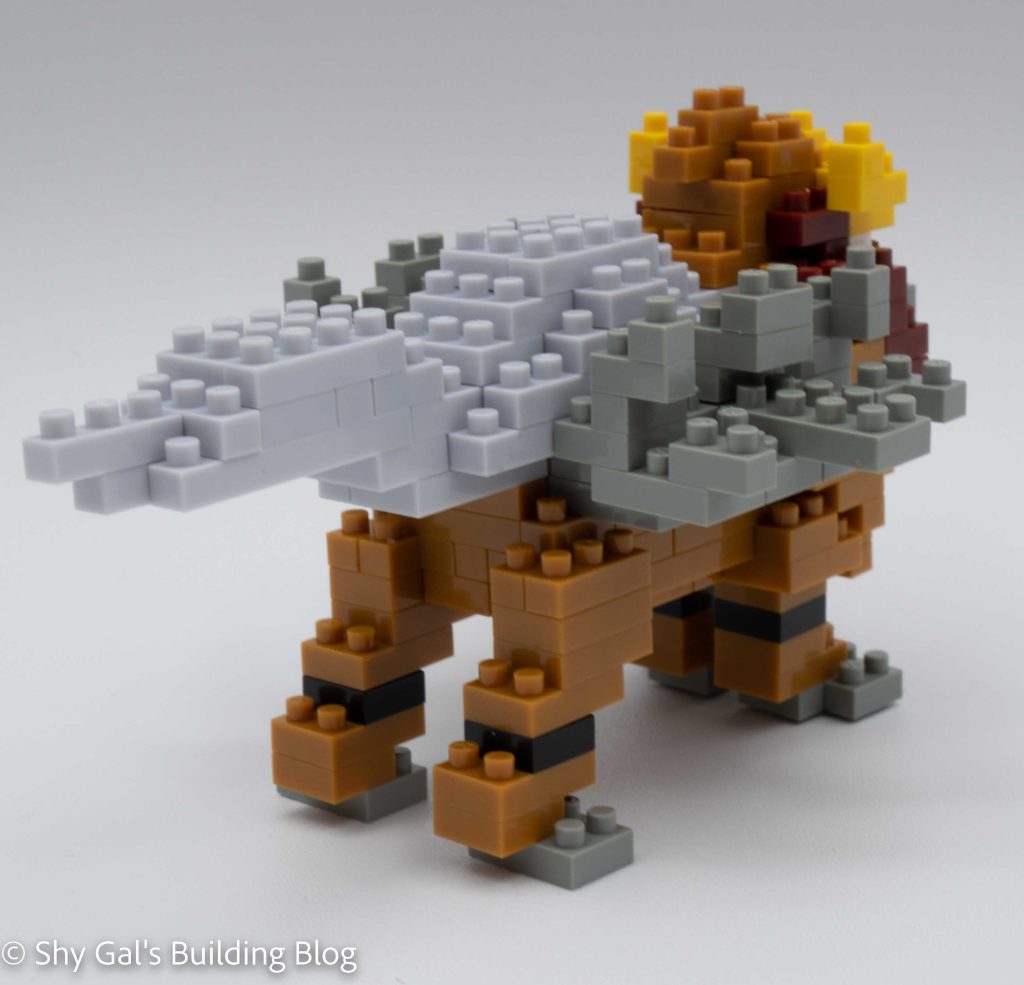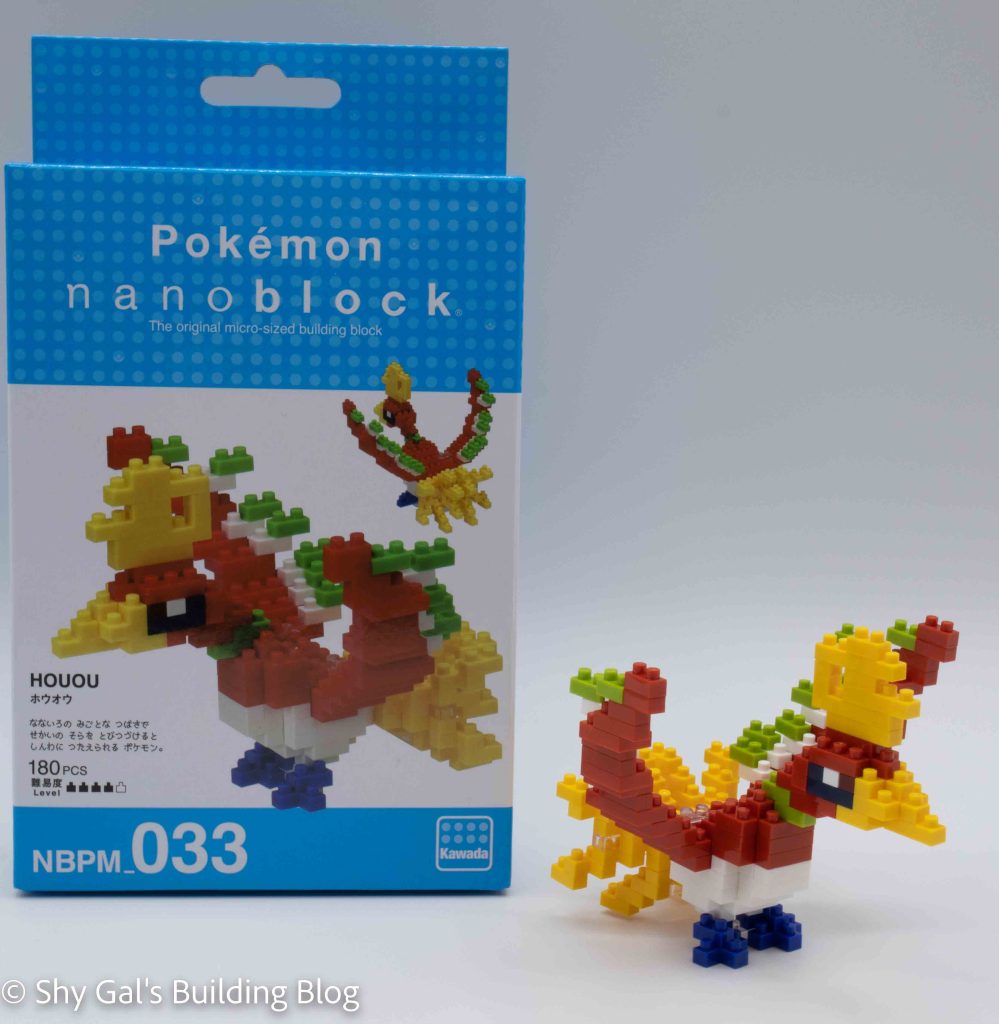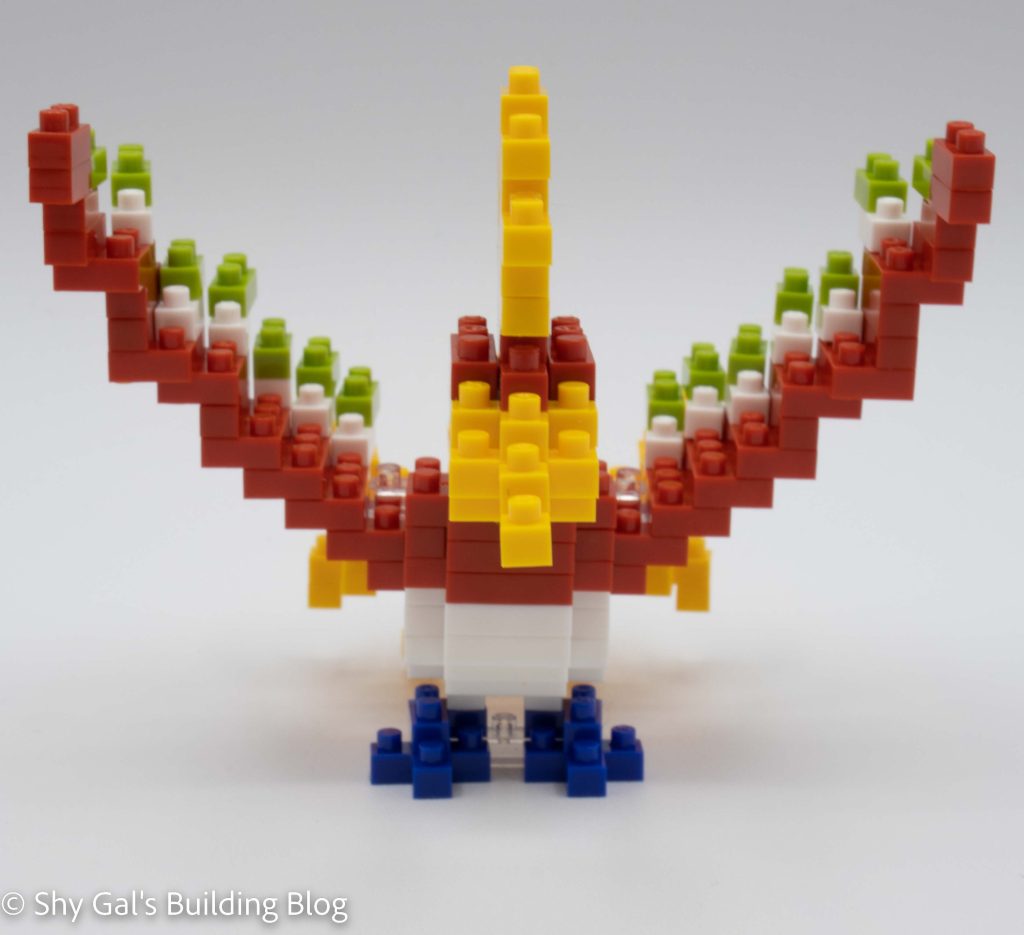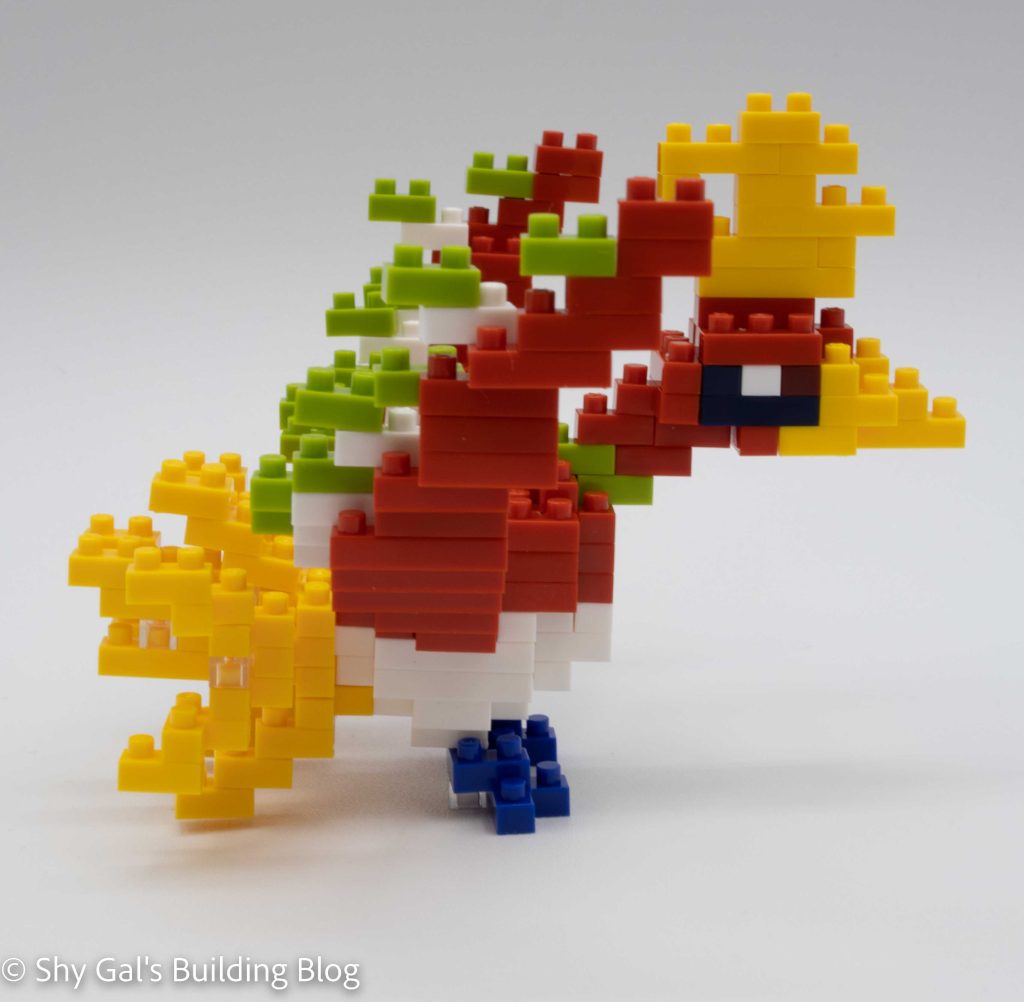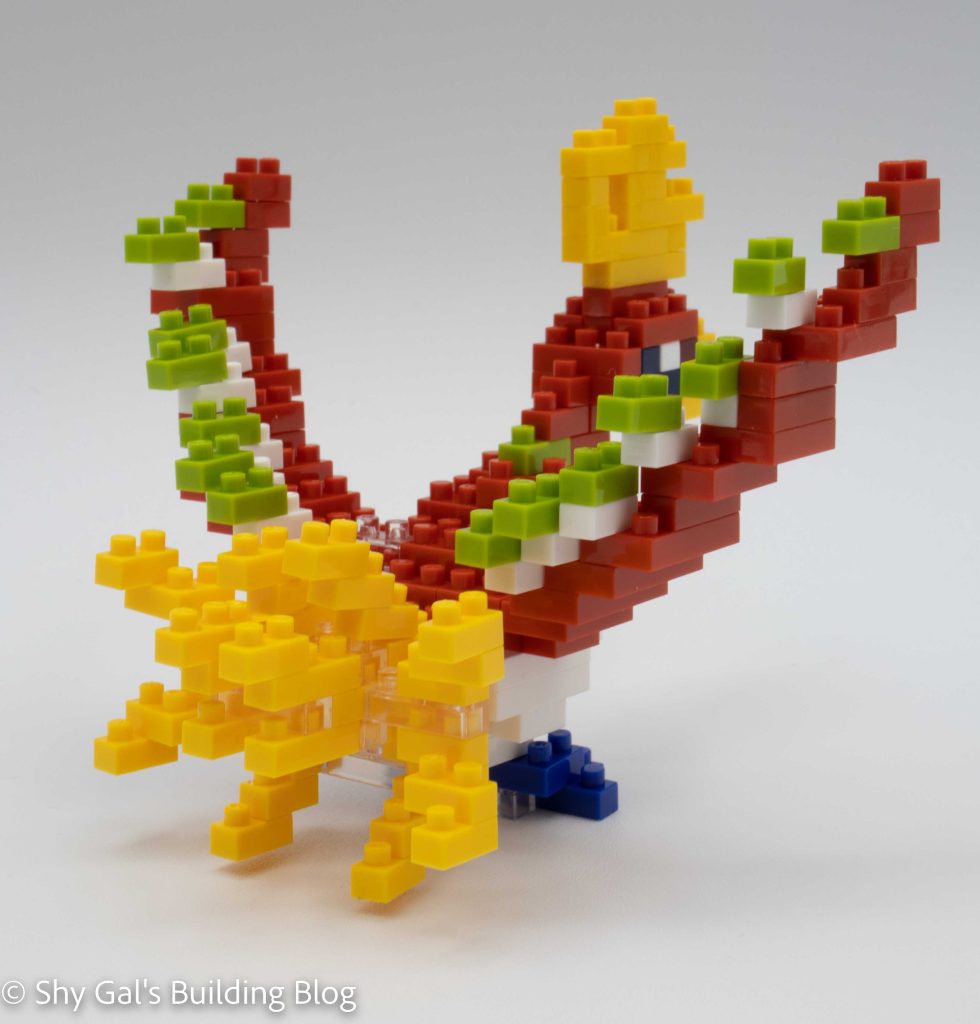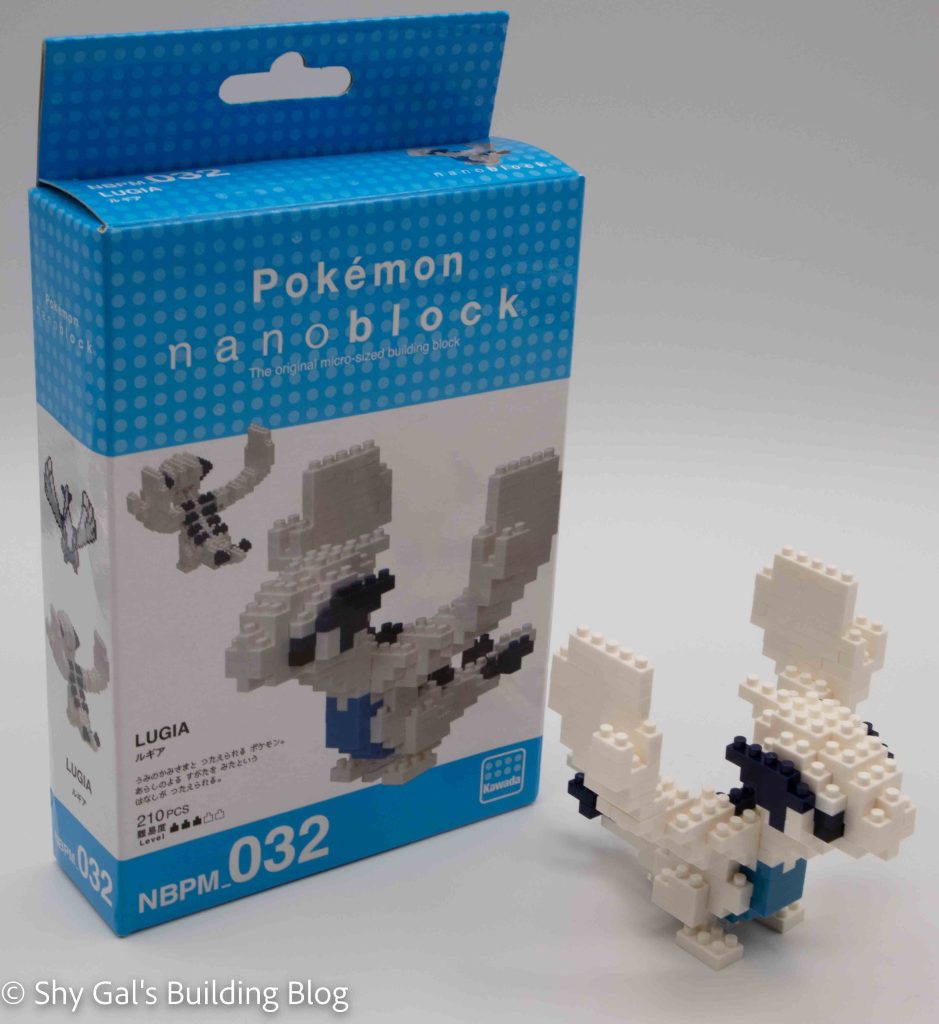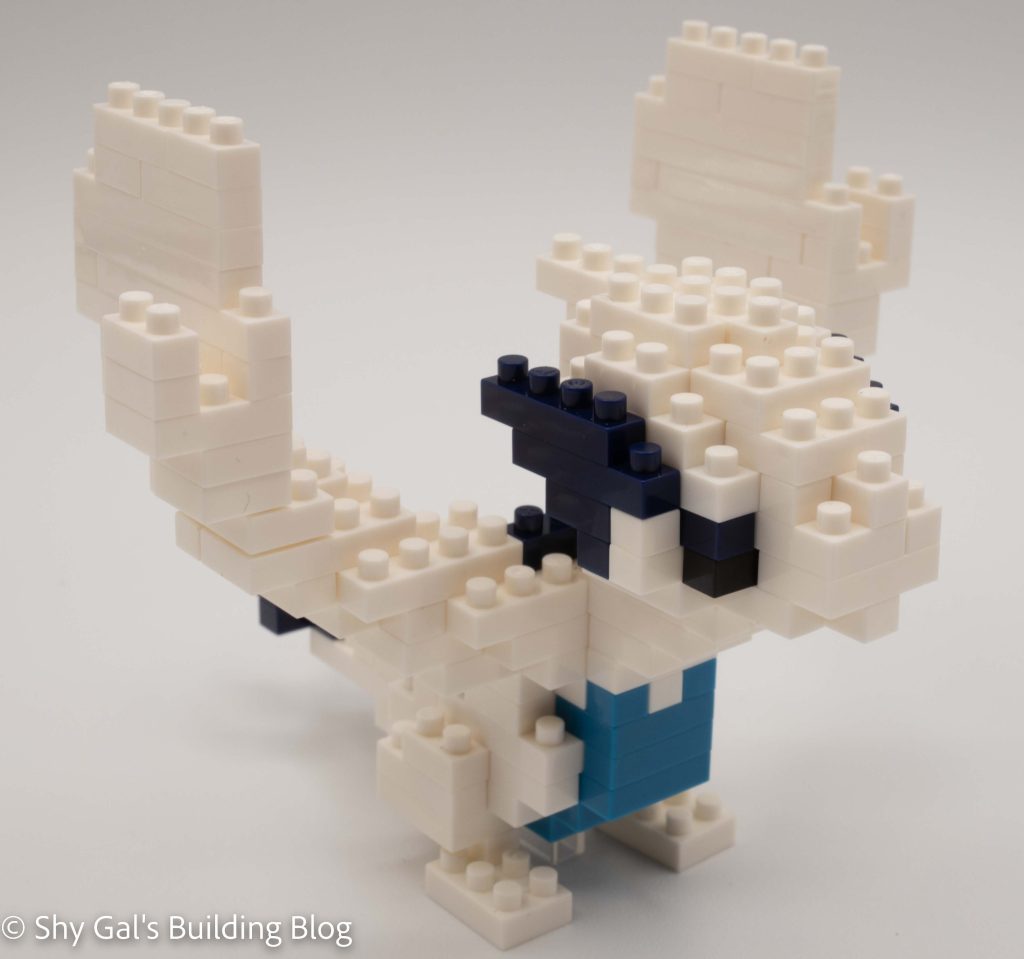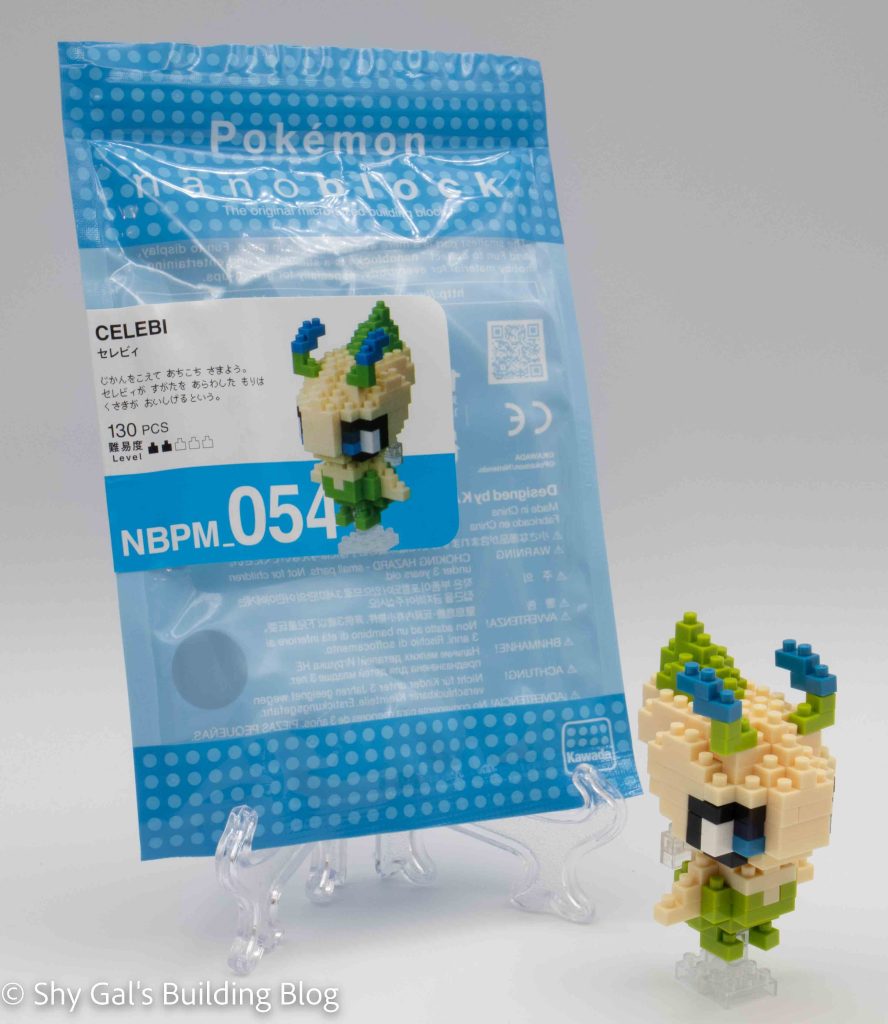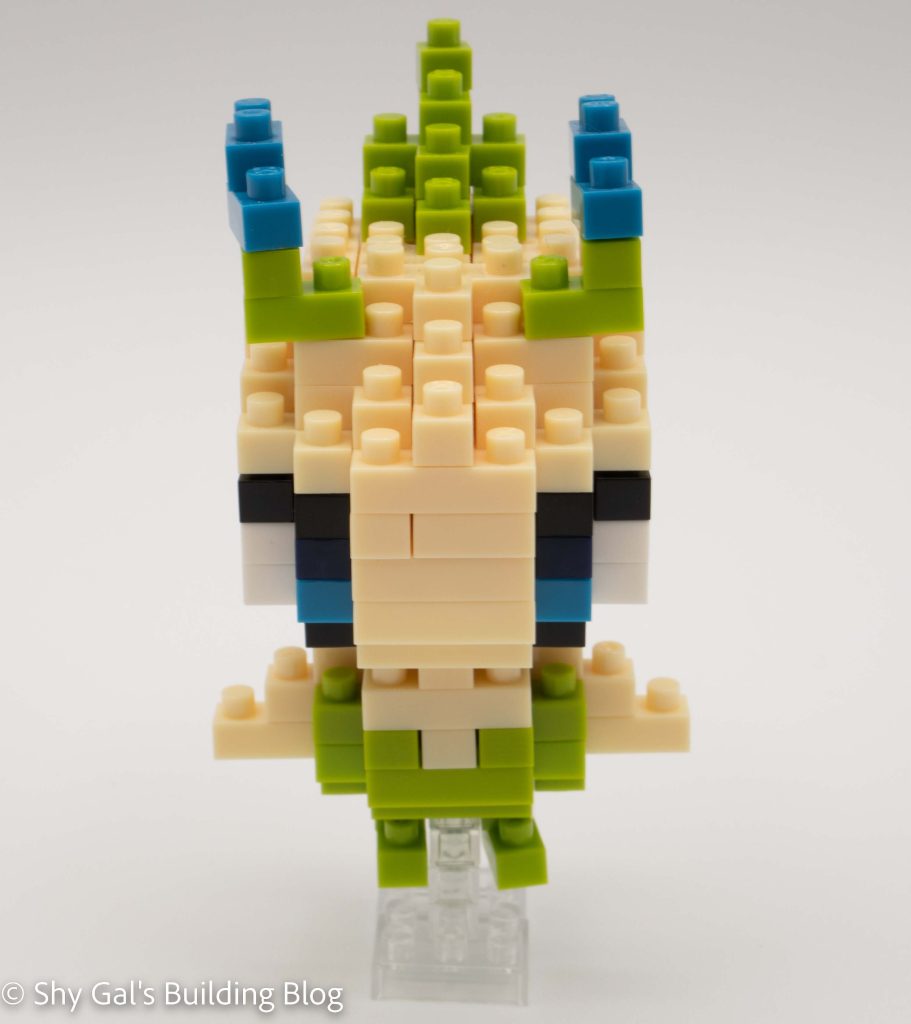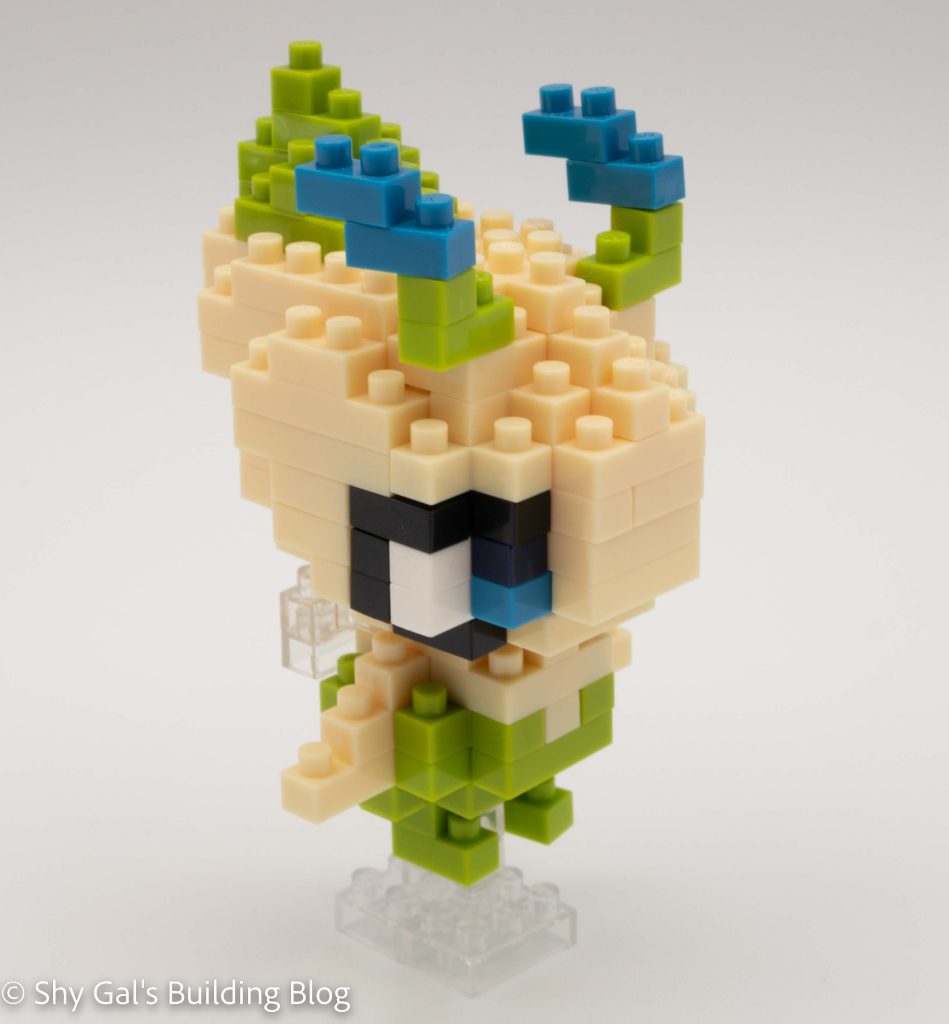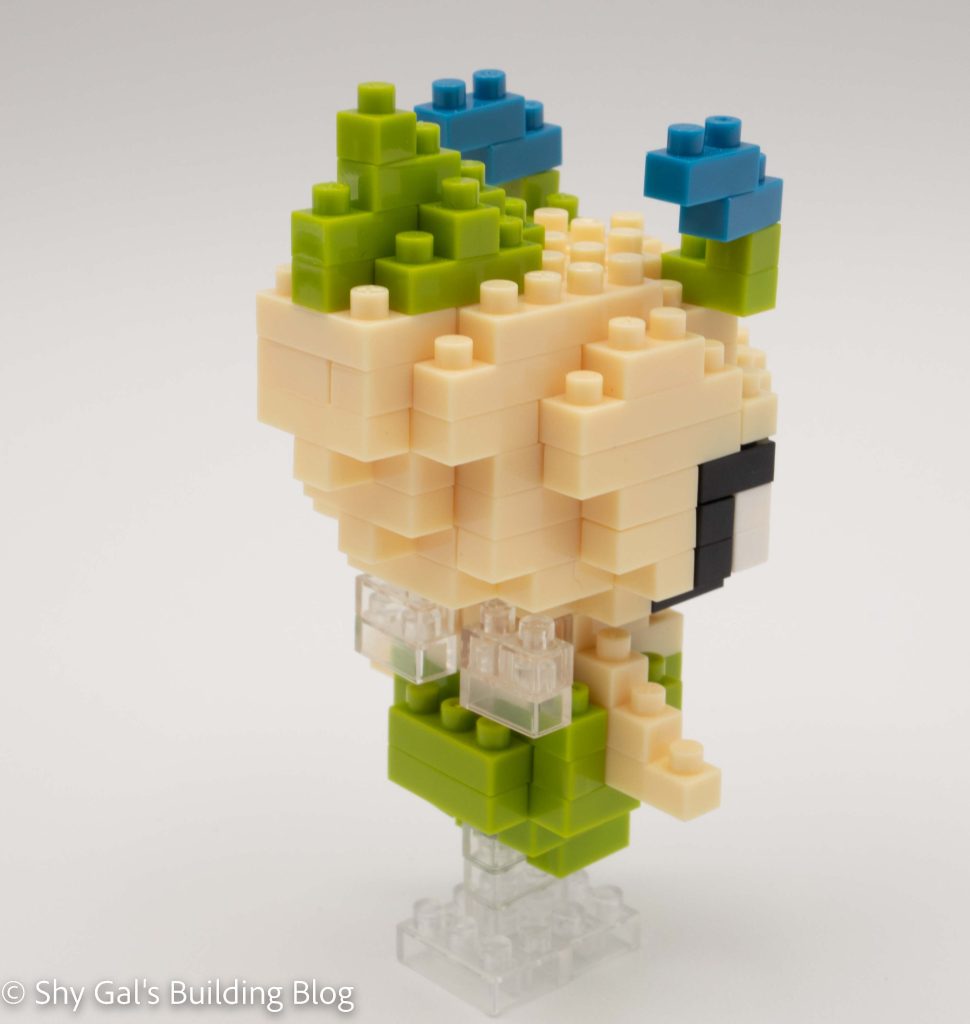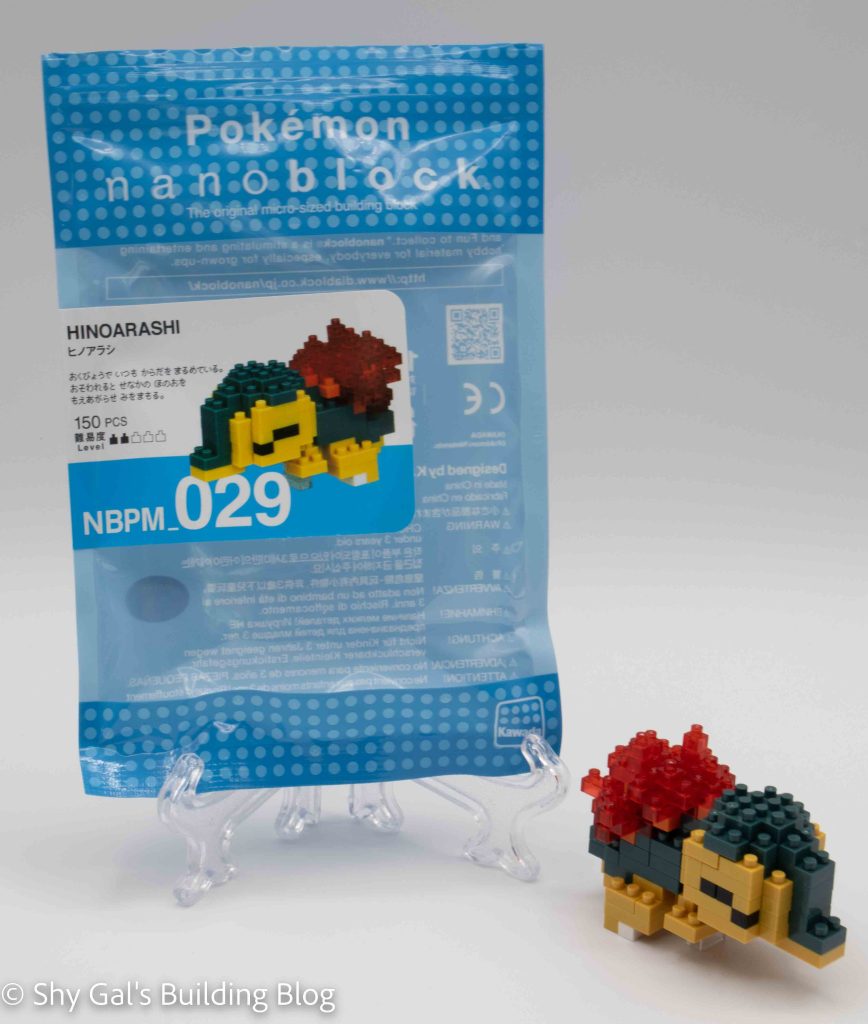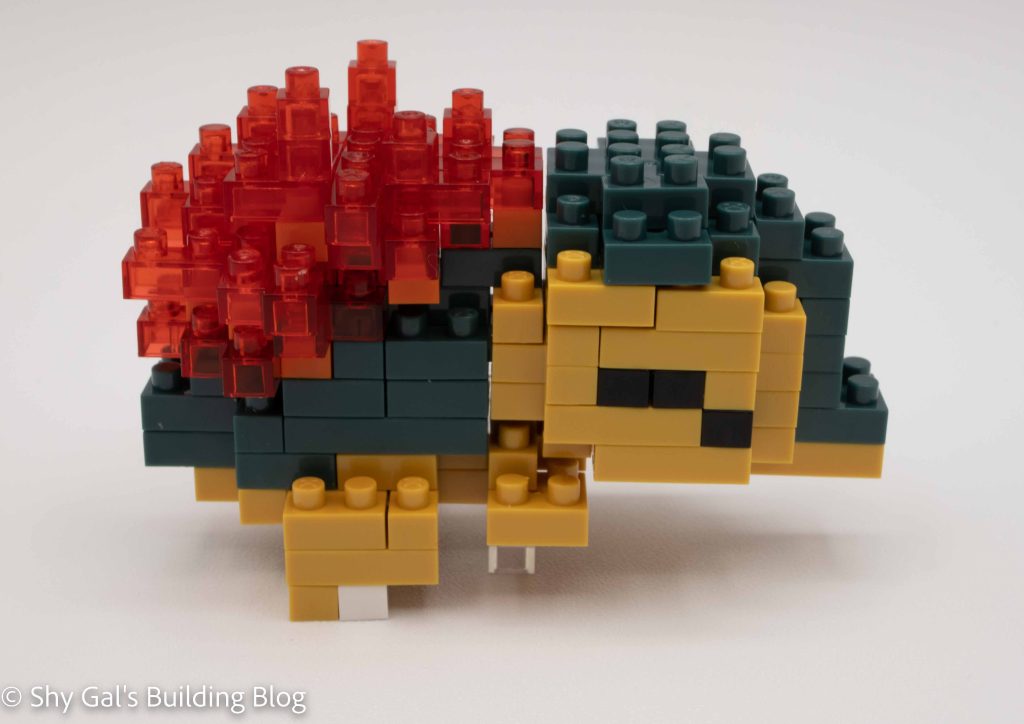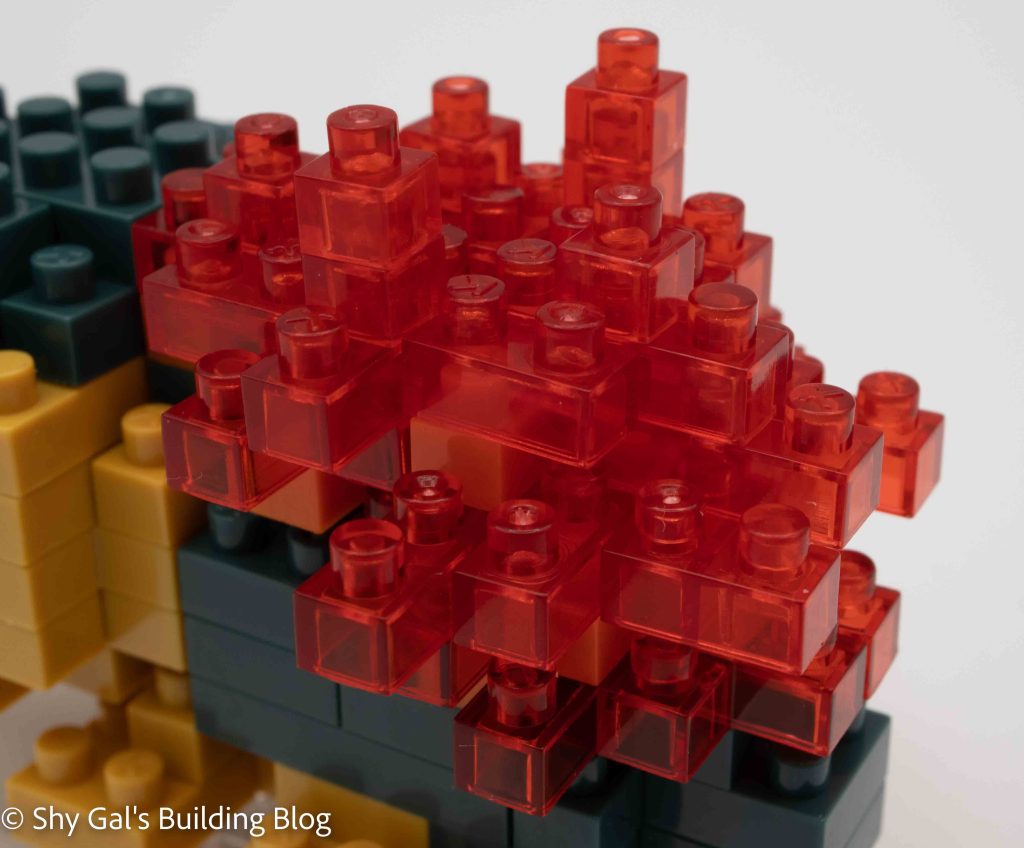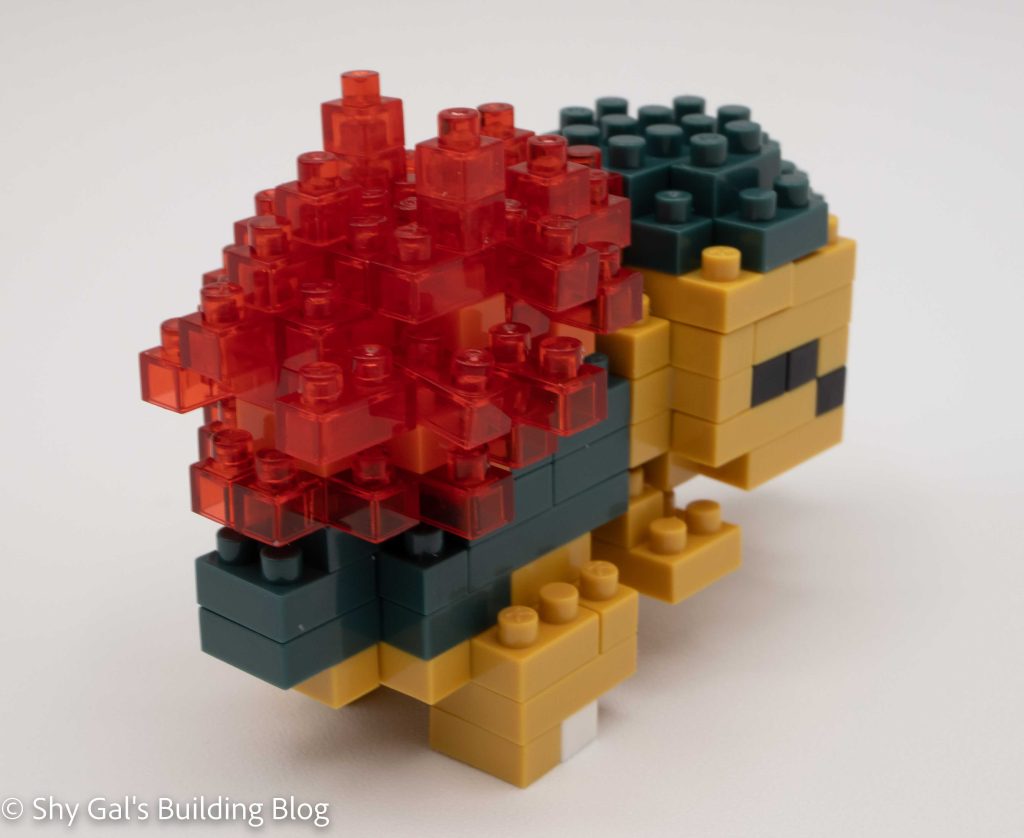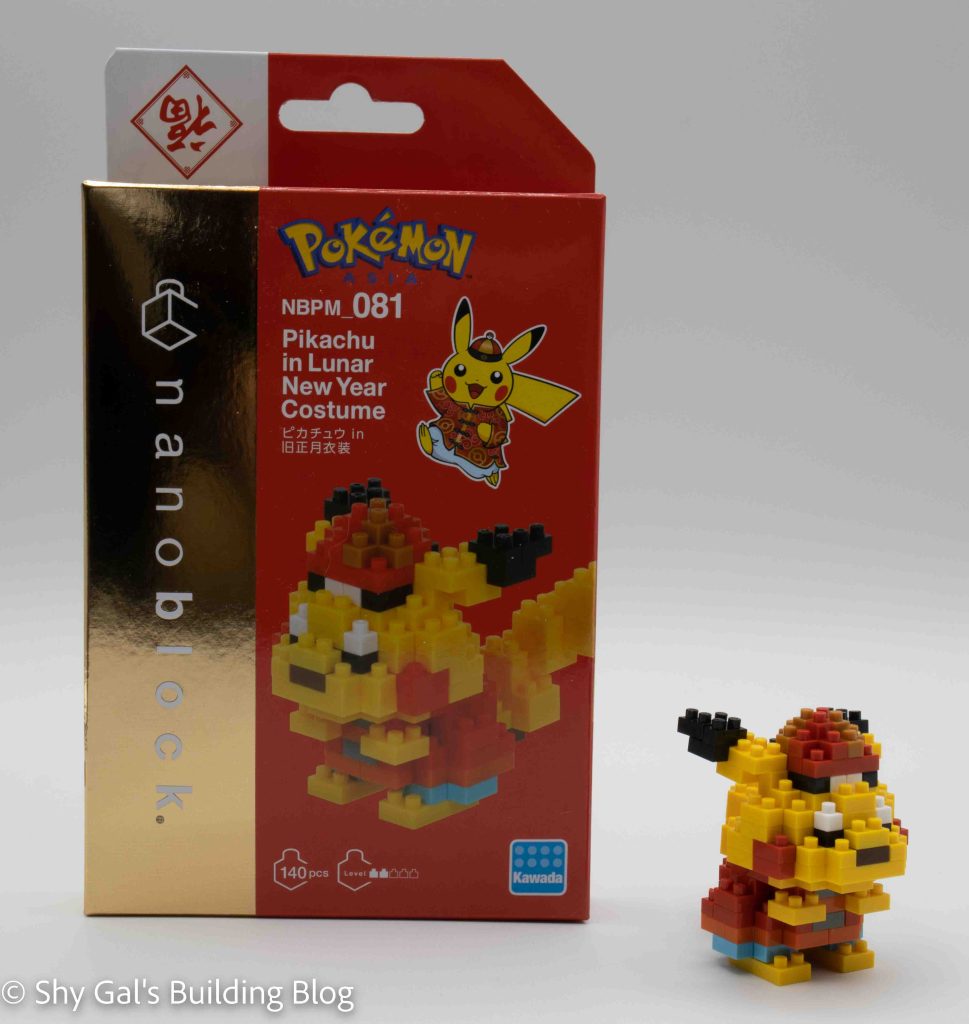
This post reviews the nanoblock Pikachu in Lunar New Year Costume build. Pikachu in Lunar New Year Costume is part of the nanoblock Pokemon collection. Wondering what else is part of the Pokemon collection? Click here for a list.
Number: NBPM_081
Number of Pieces: 140
Difficulty Rating: 2/5
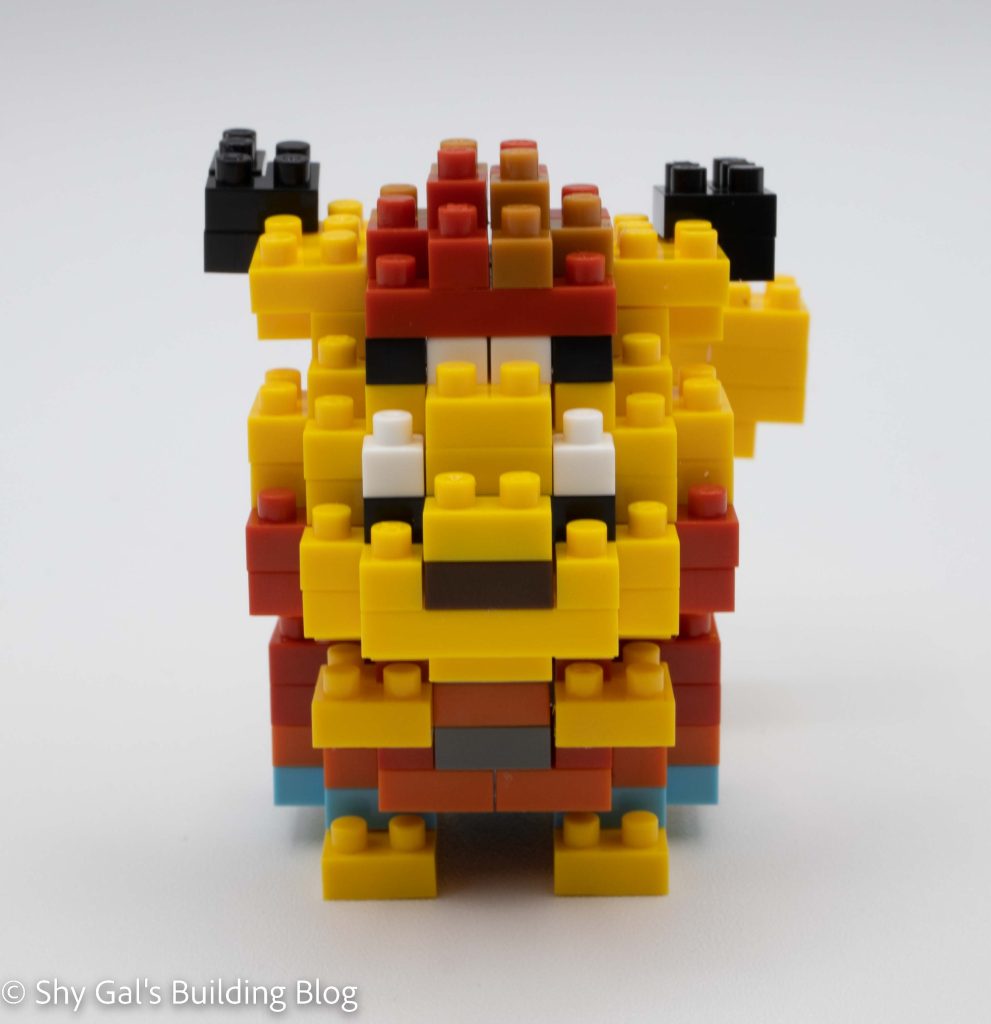
This Pikachu looks similar to the original NBPM_001 Pikachu, except this Pikachu is wearing a Chinese-style jacket, hat, and hat. I like that the front of the jacket has grey bricks representing Chinese-style jacket ties.
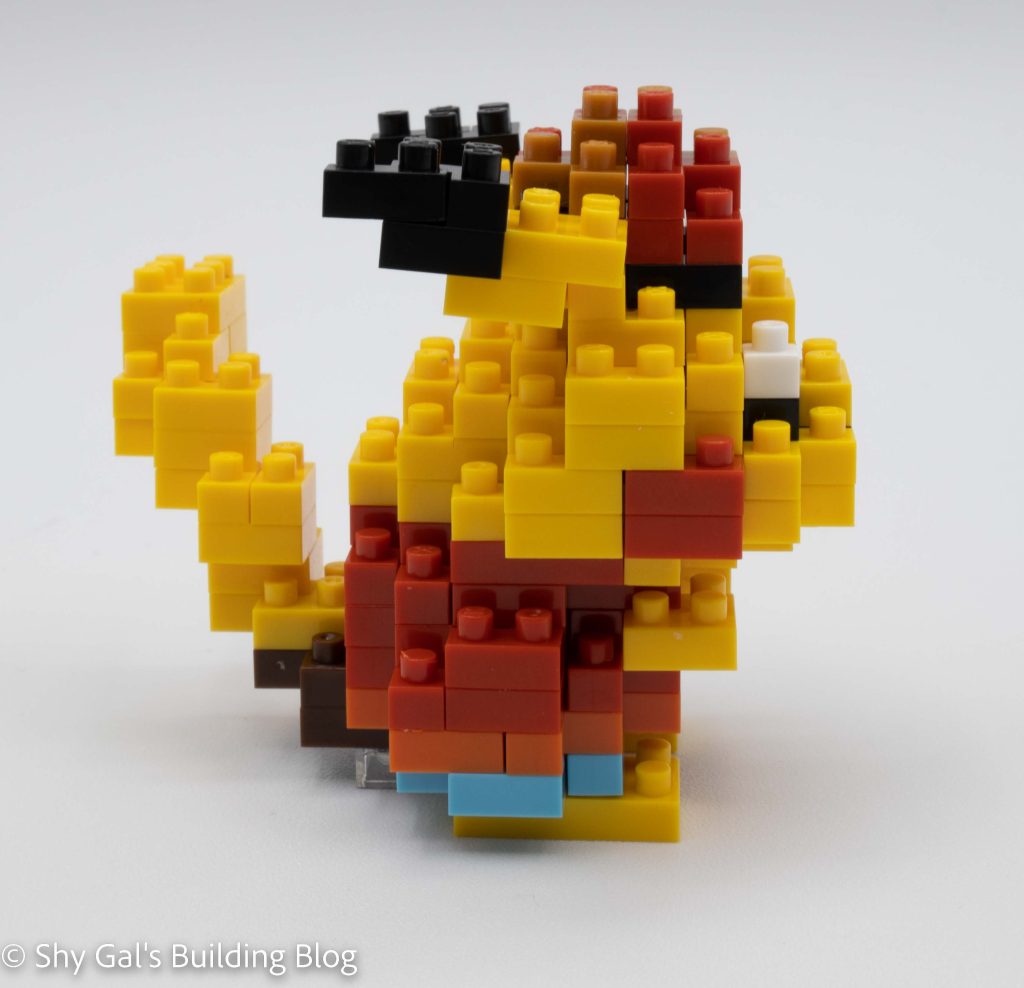
Since it has been so long since I’ve built NBPM_001, I can’t really compare the 2 builds, but the final Pikachus are similar.
The first step is to lay out the base layer, Pikachu’s pants. I built most of Pikachu on my nanoblock pad.
The next 5 steps are to create the Chinese-style jacket. The details building jacket includes having dark grey for the fasteners in the front. You also add Pikachu’s front paws.
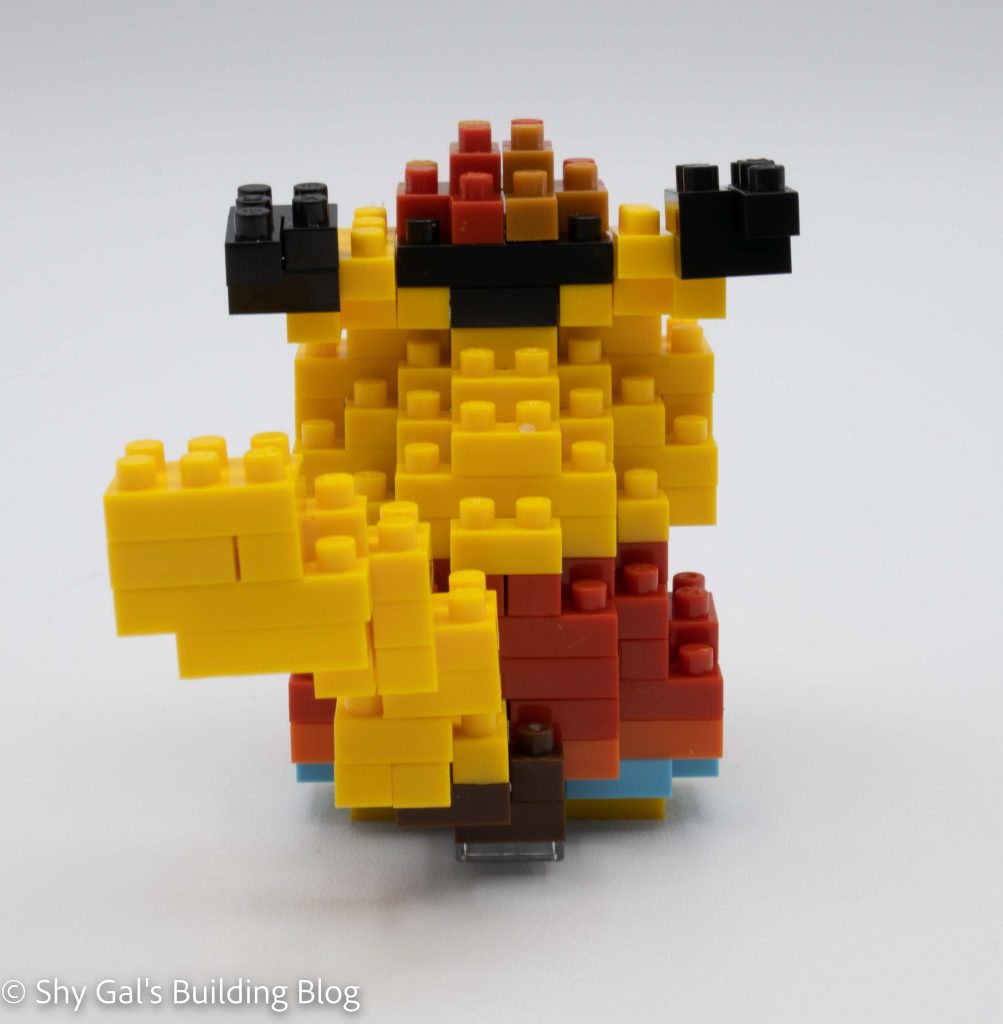
After building the jacket, it is time to build Pikachu’s head. The head is straightforward and has simple layers but adds a lot of detail. You add the nose and the eyes. The other thing that makes this build unique is that Pikachu wears a hat. The hat is straightforward. I’m not a fan of the brown in the hat and wish it had been a different color.
Then it’s time to finish the details by adding the feet, ears, and tail. The feet are simply 2×4 bricks attached to the bottom of the build. There is also a clear block to keep the build from tipping. The ears are each a simple 3 layers of bricks attached to the head. The tail is by far the trickiest part of the build. Several layers of bricks are stacked together to create the zig-zag tail. It was also hard to tell how exactly to connect the tail to the body.
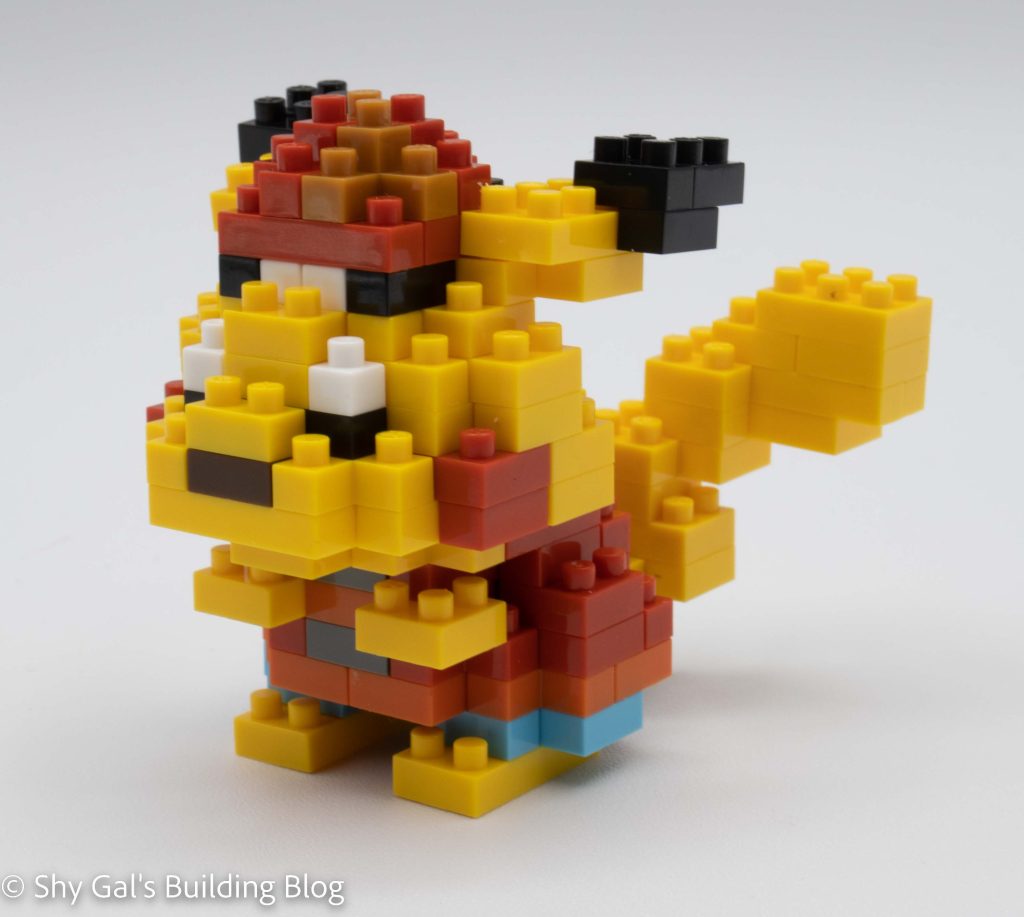
Things I liked:
- I think the costume is a cute and creative detail and is unique to the build
Things I didn’t like:
- It was hard to figure out how to attach the tail
- The brown on the hat is a little random compared to all the other colors in the build
